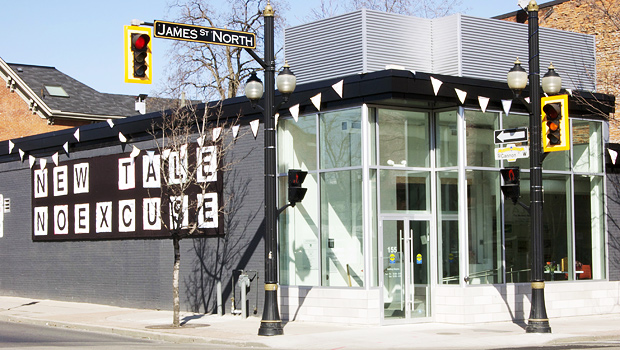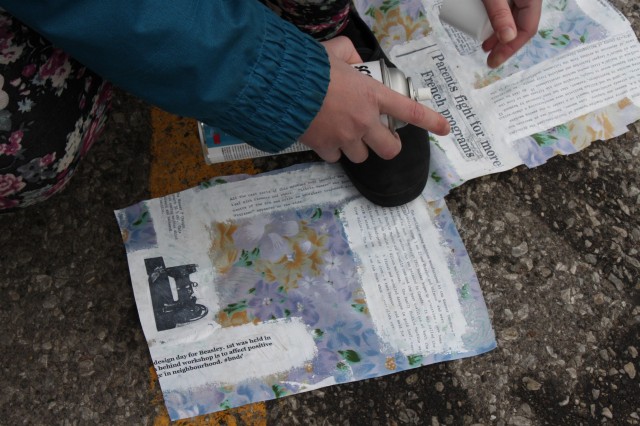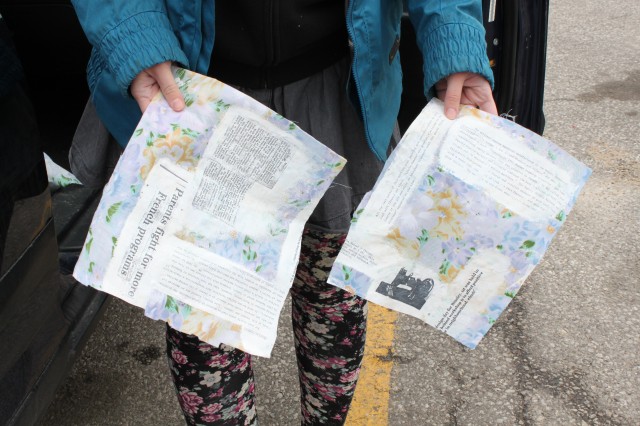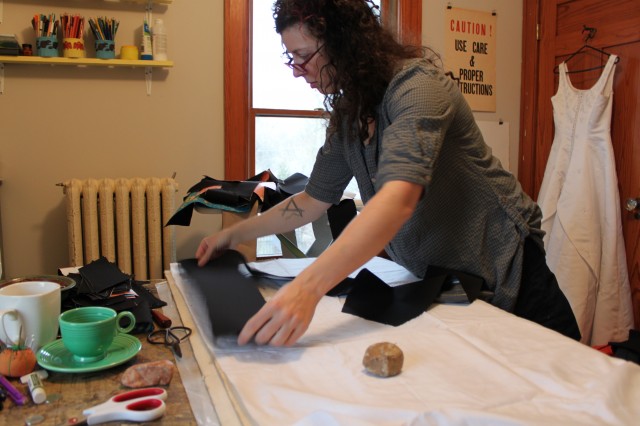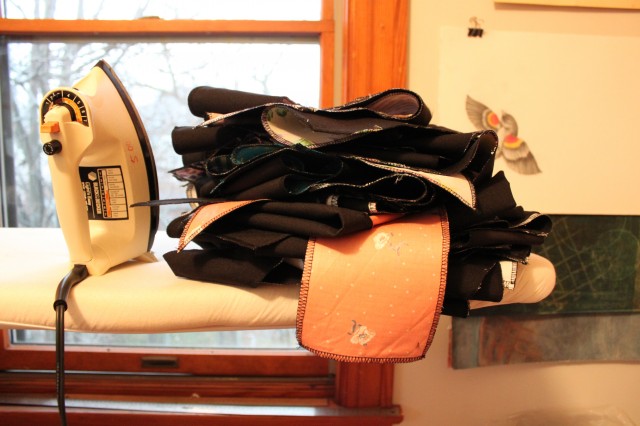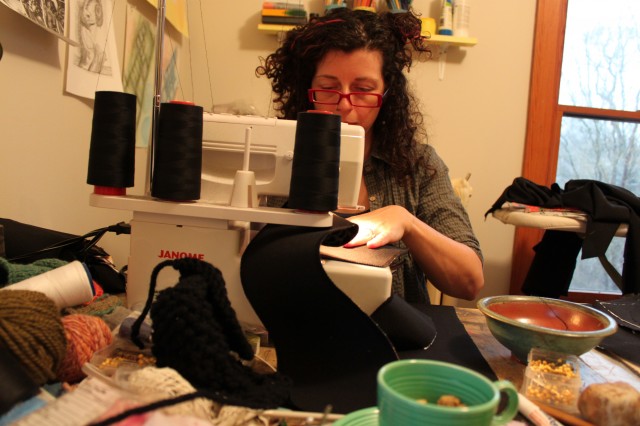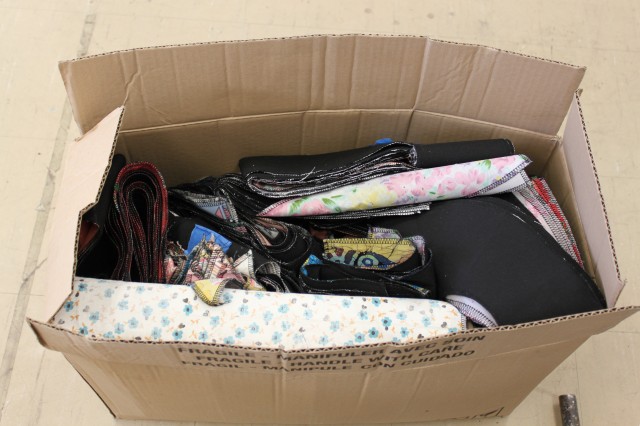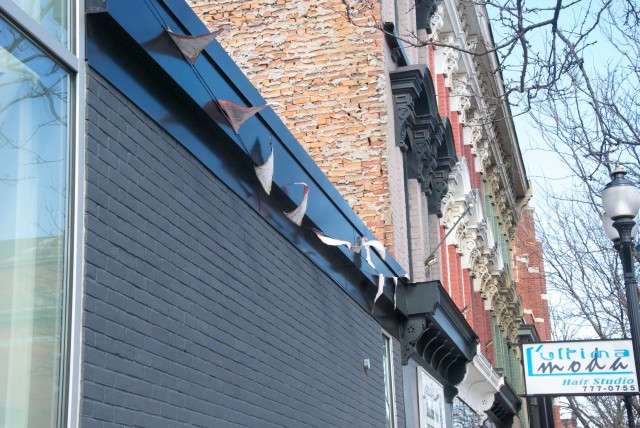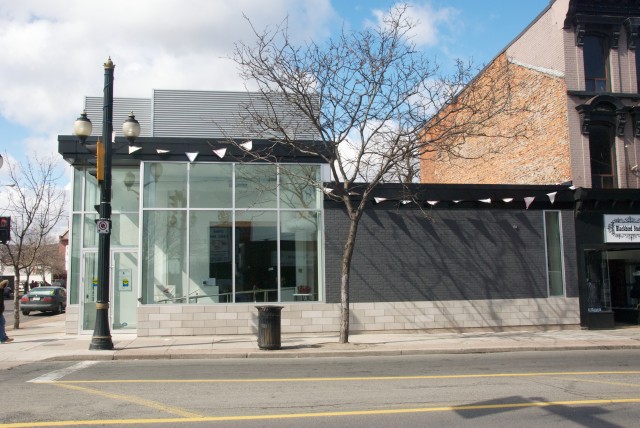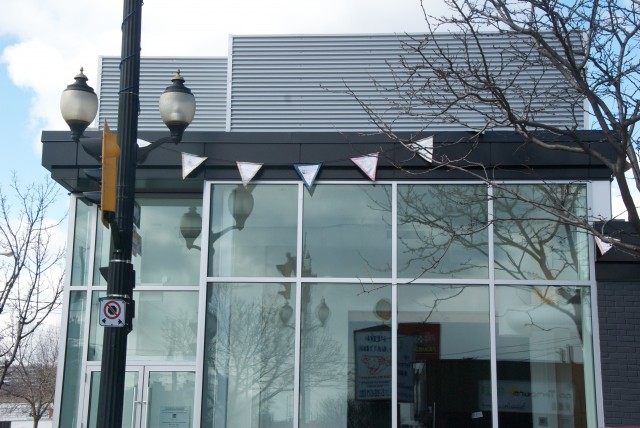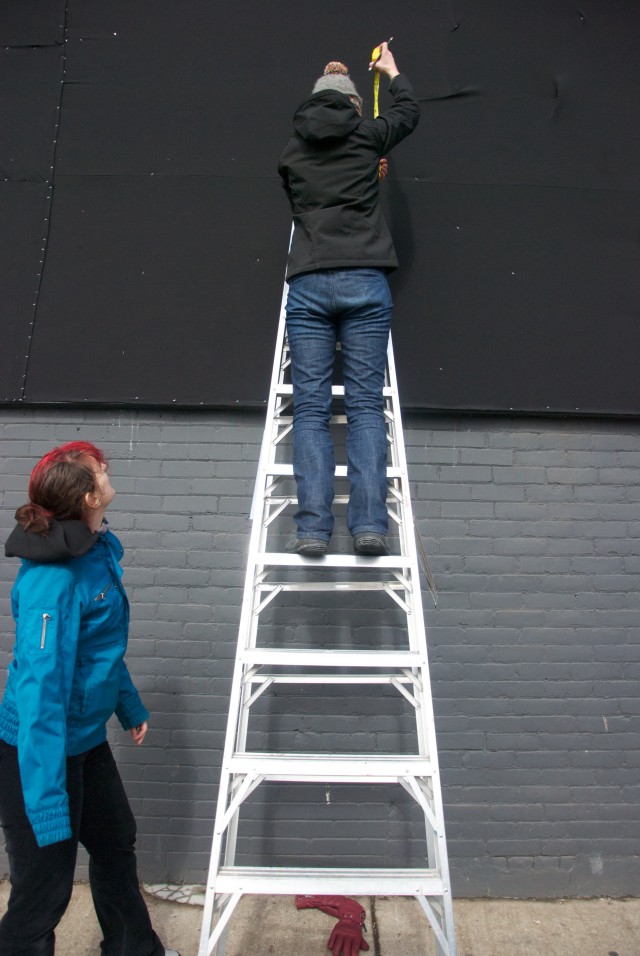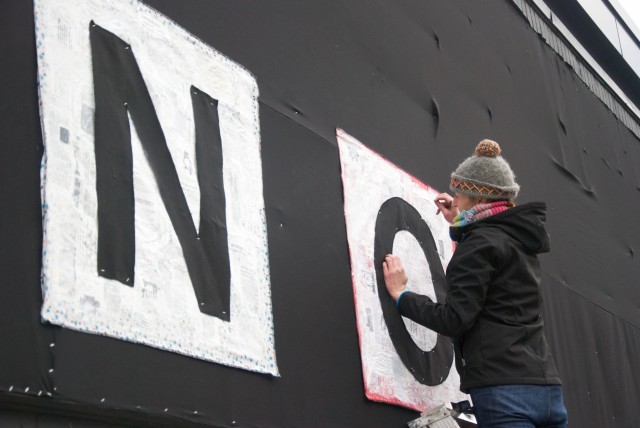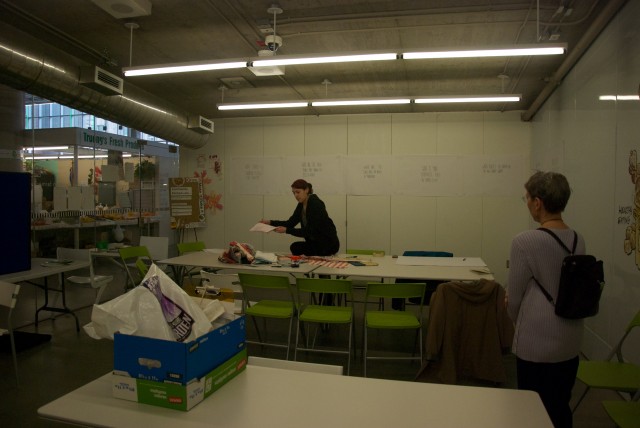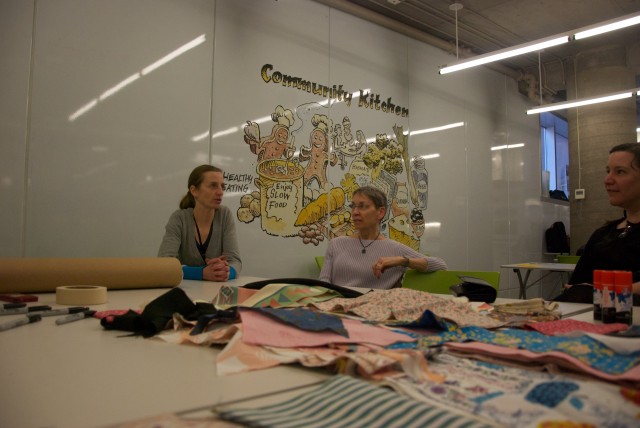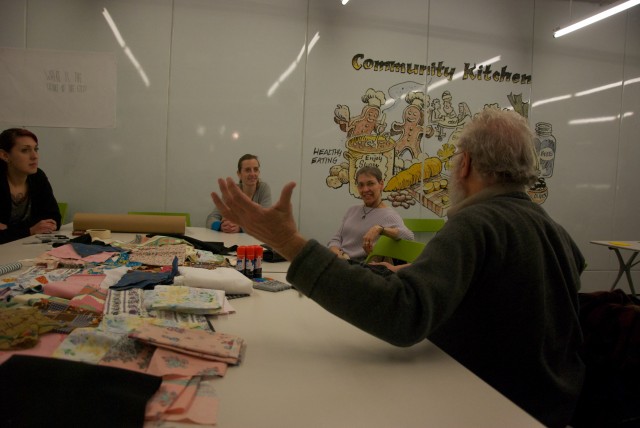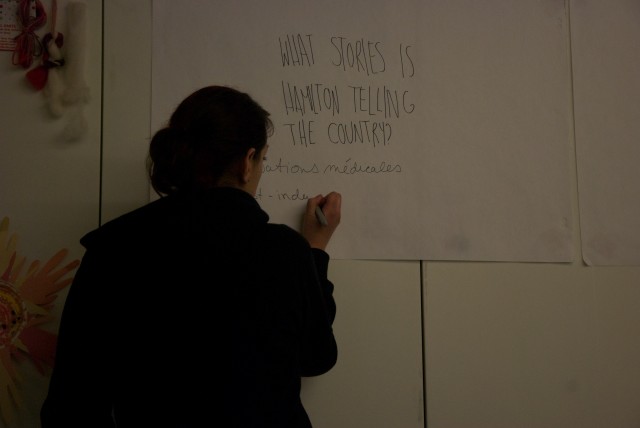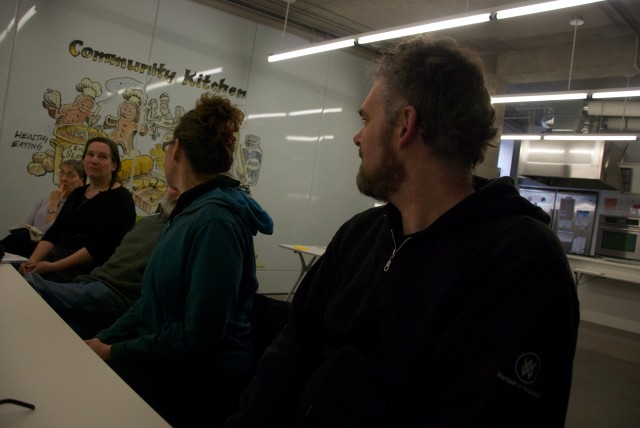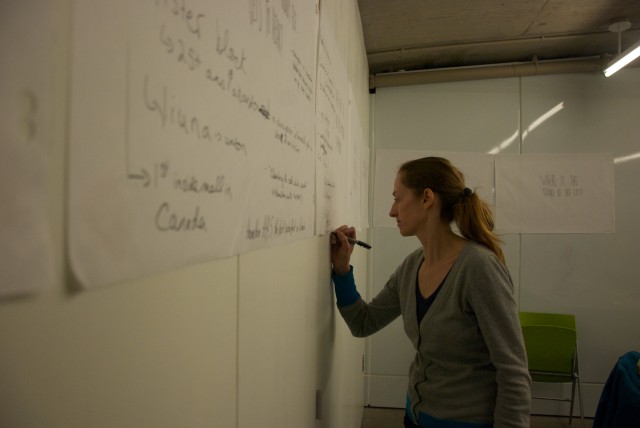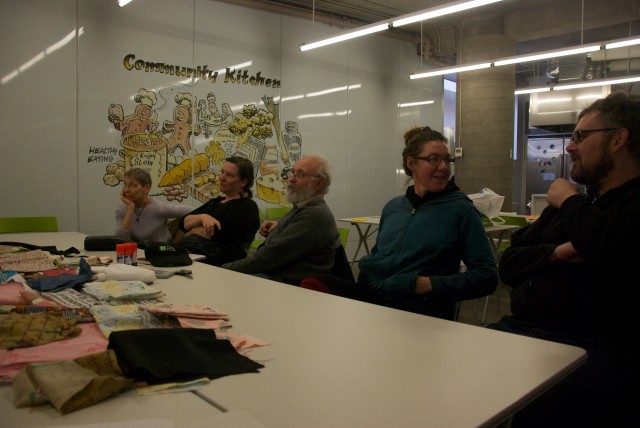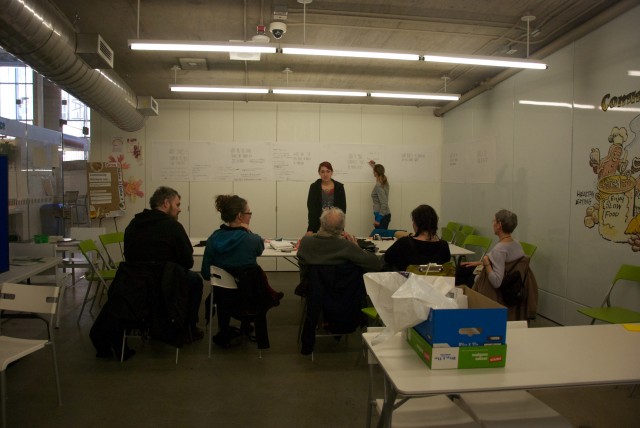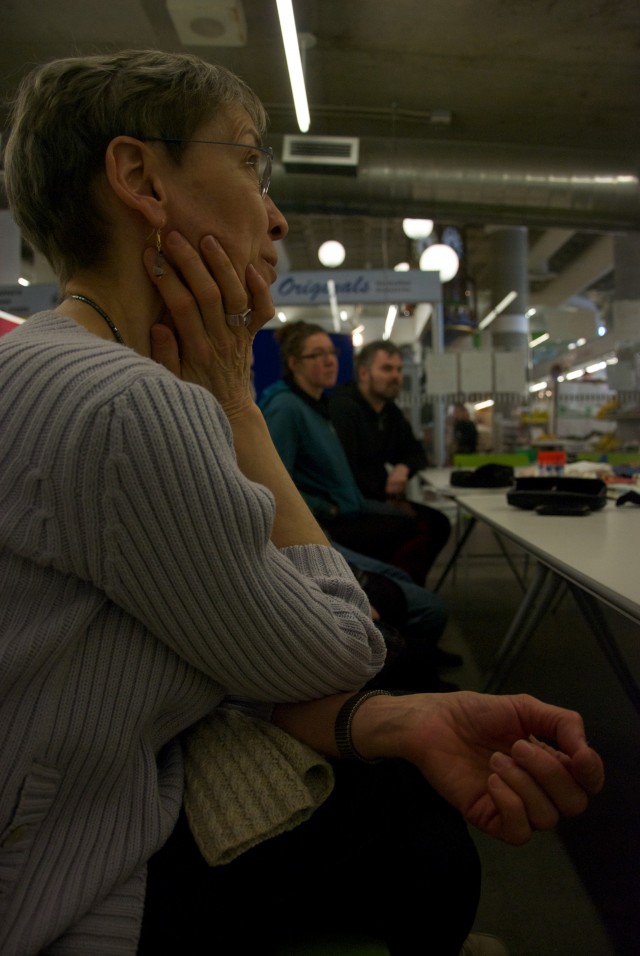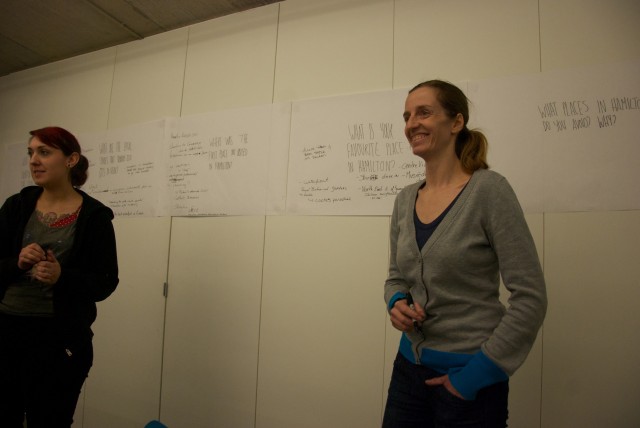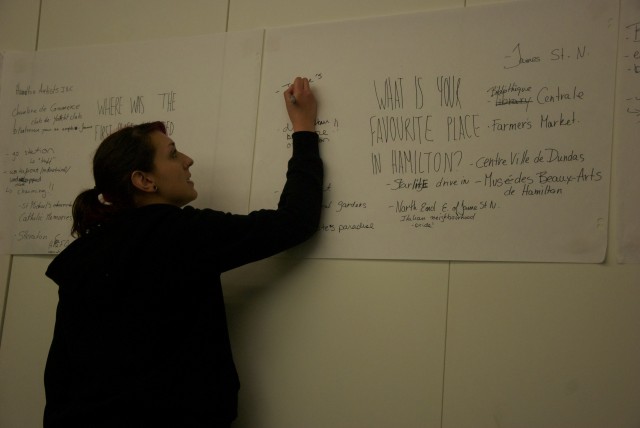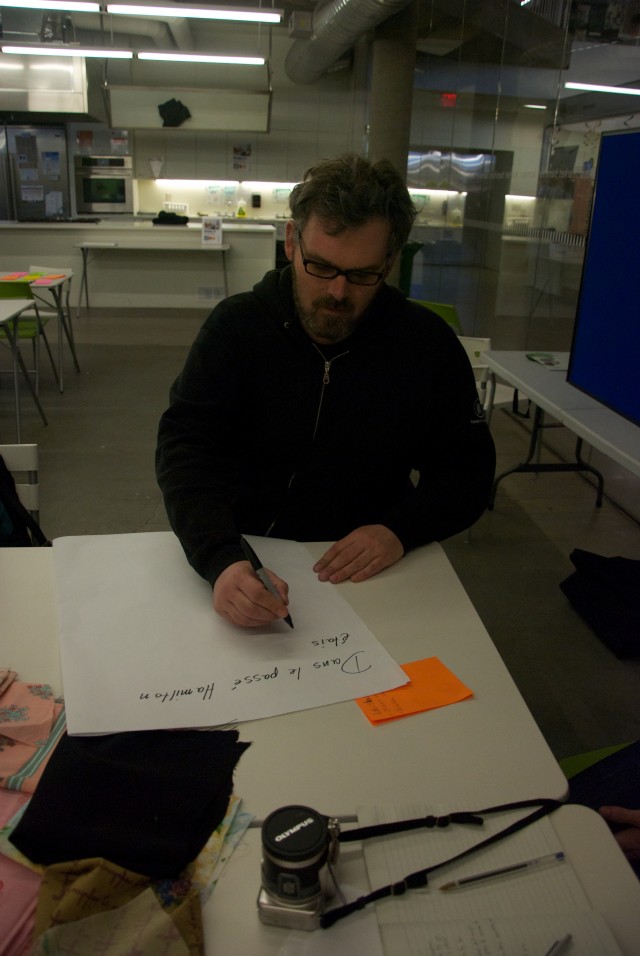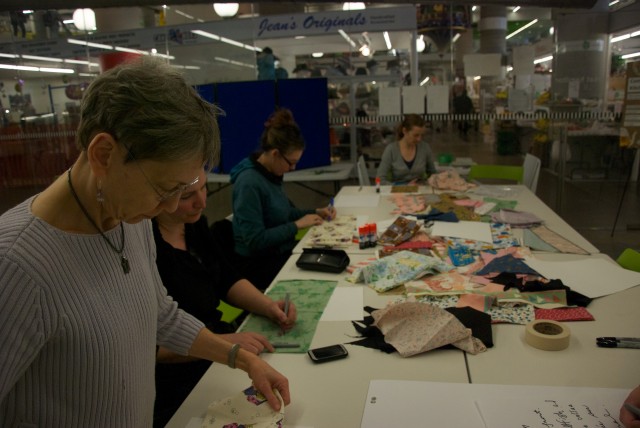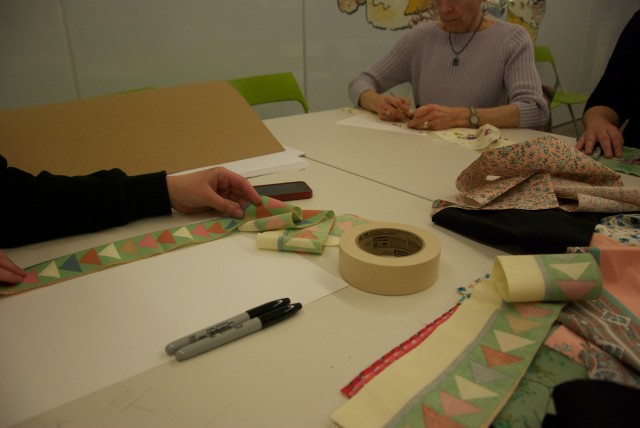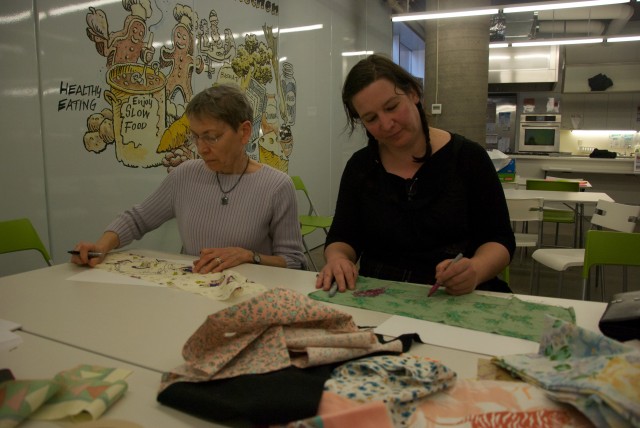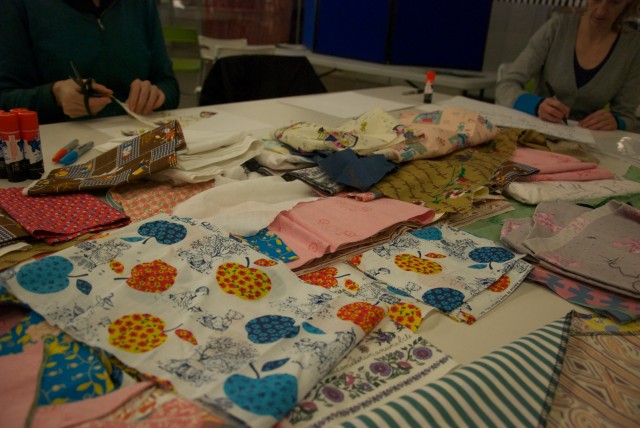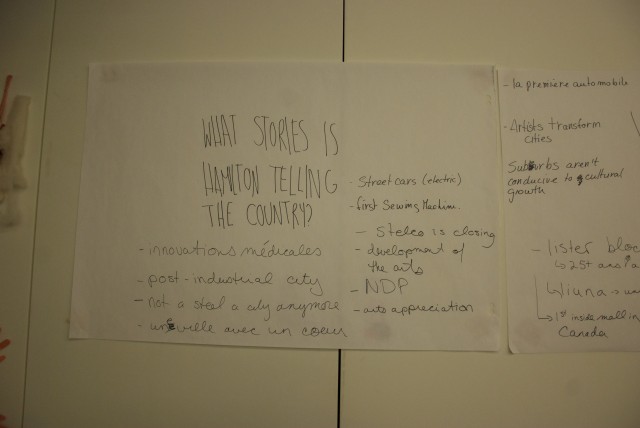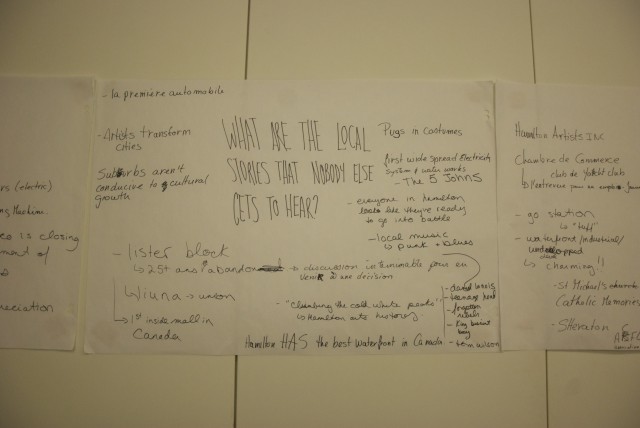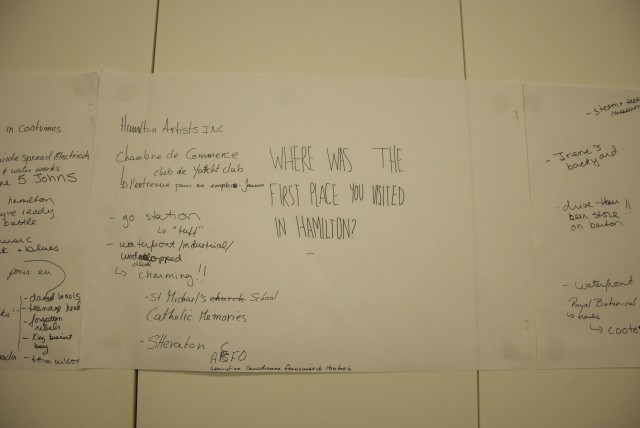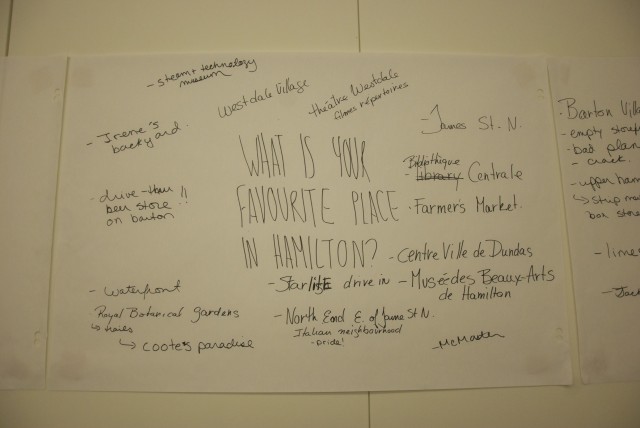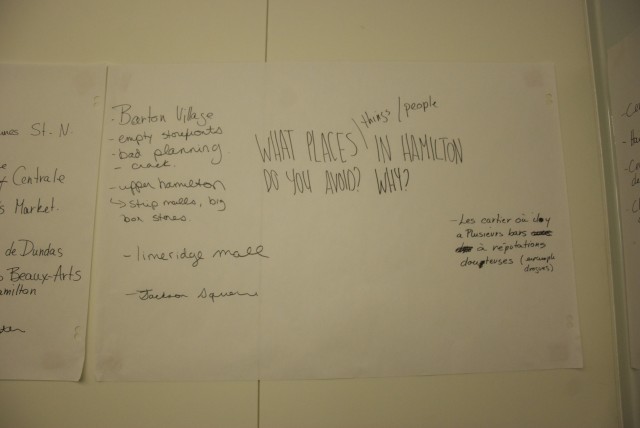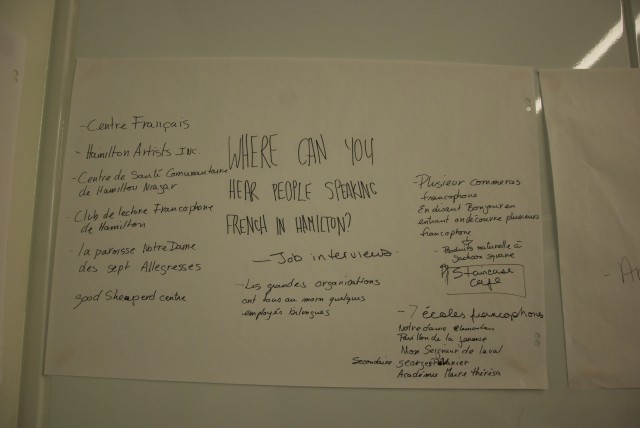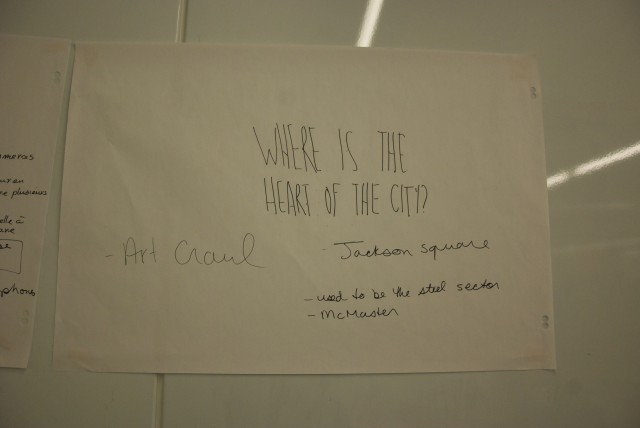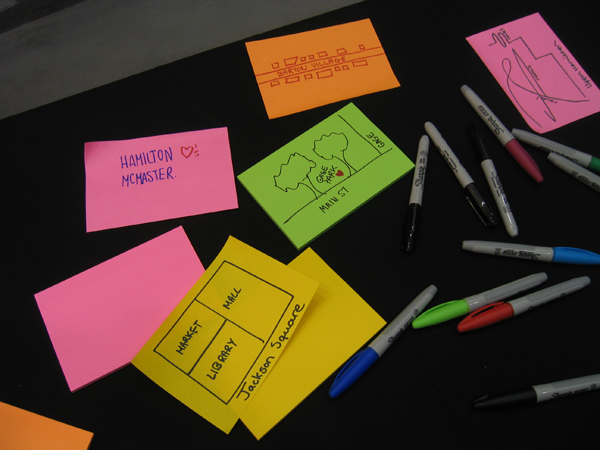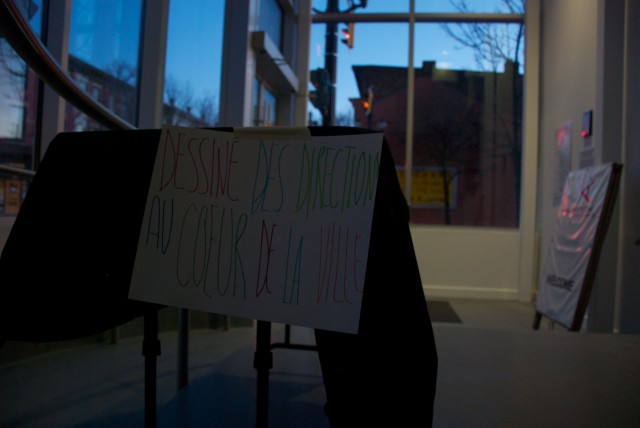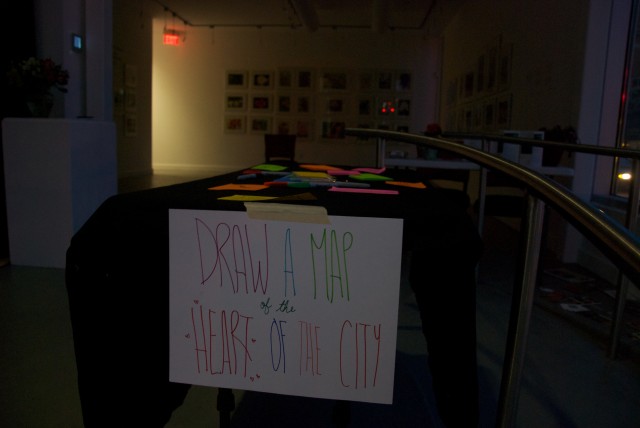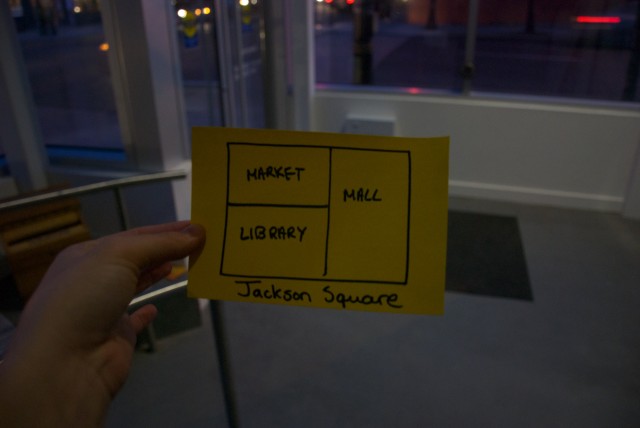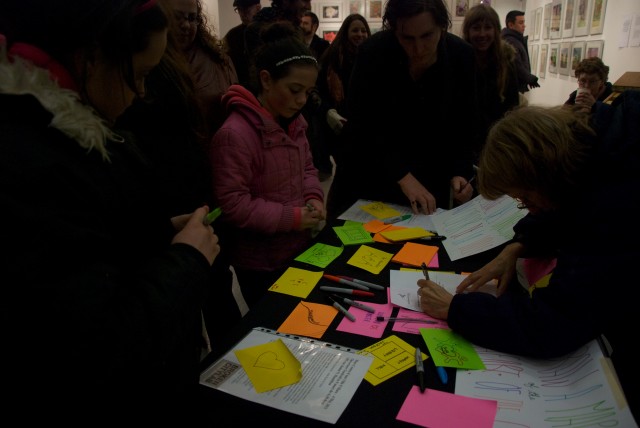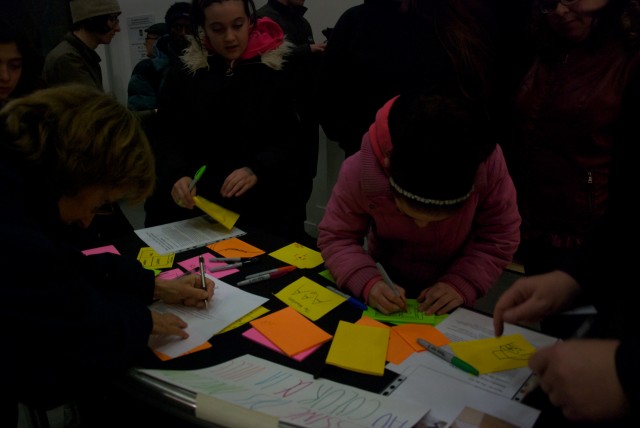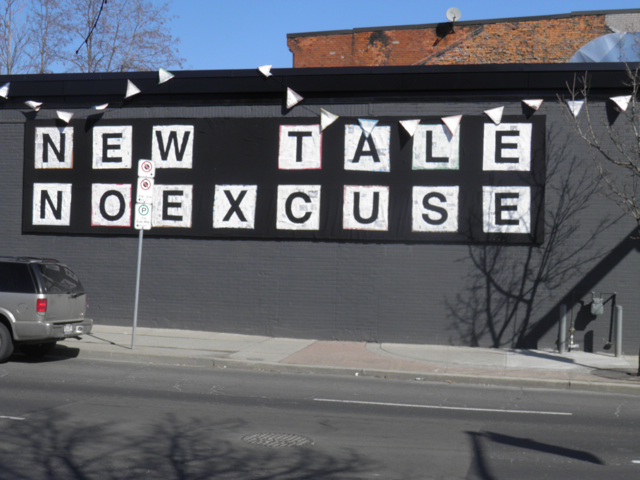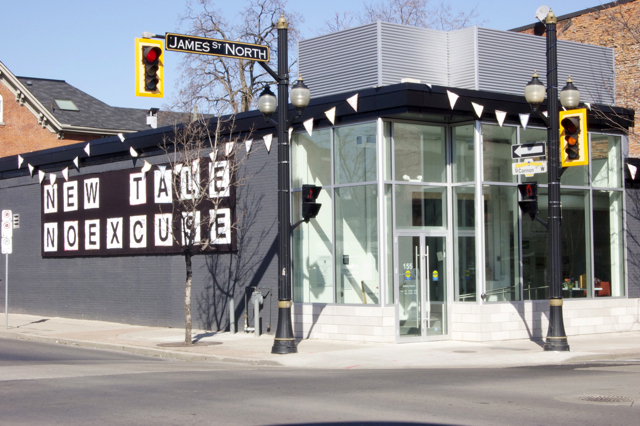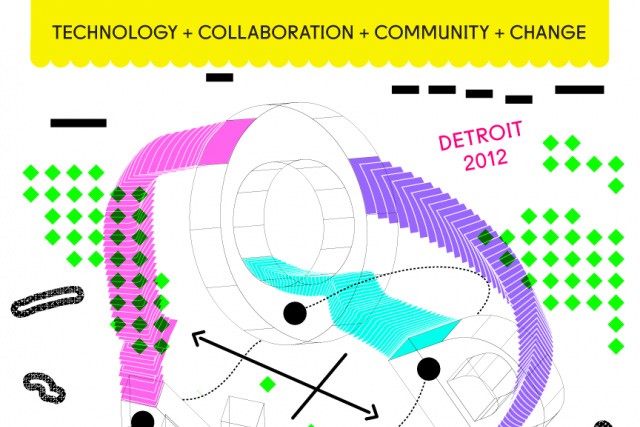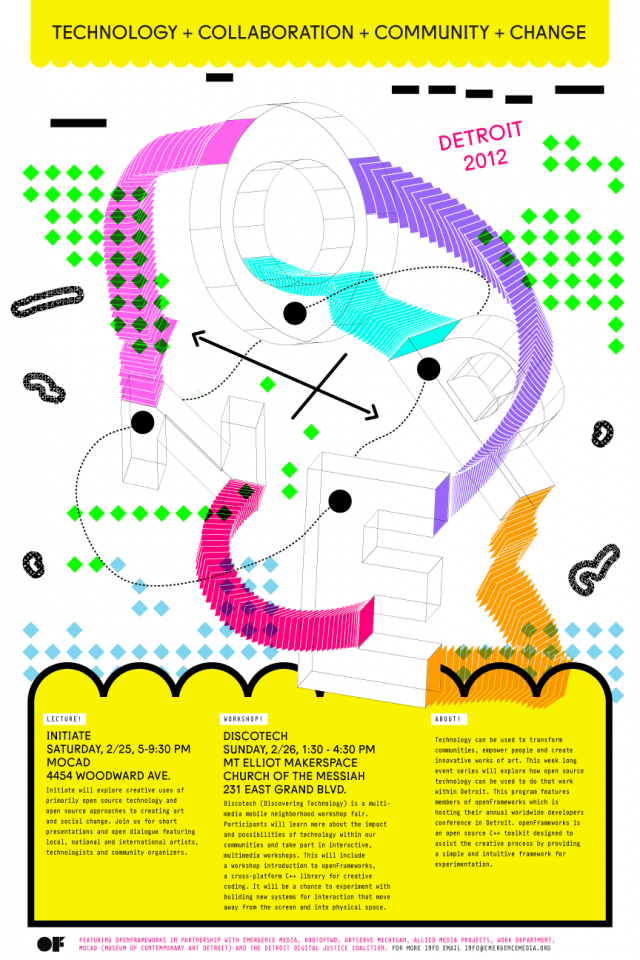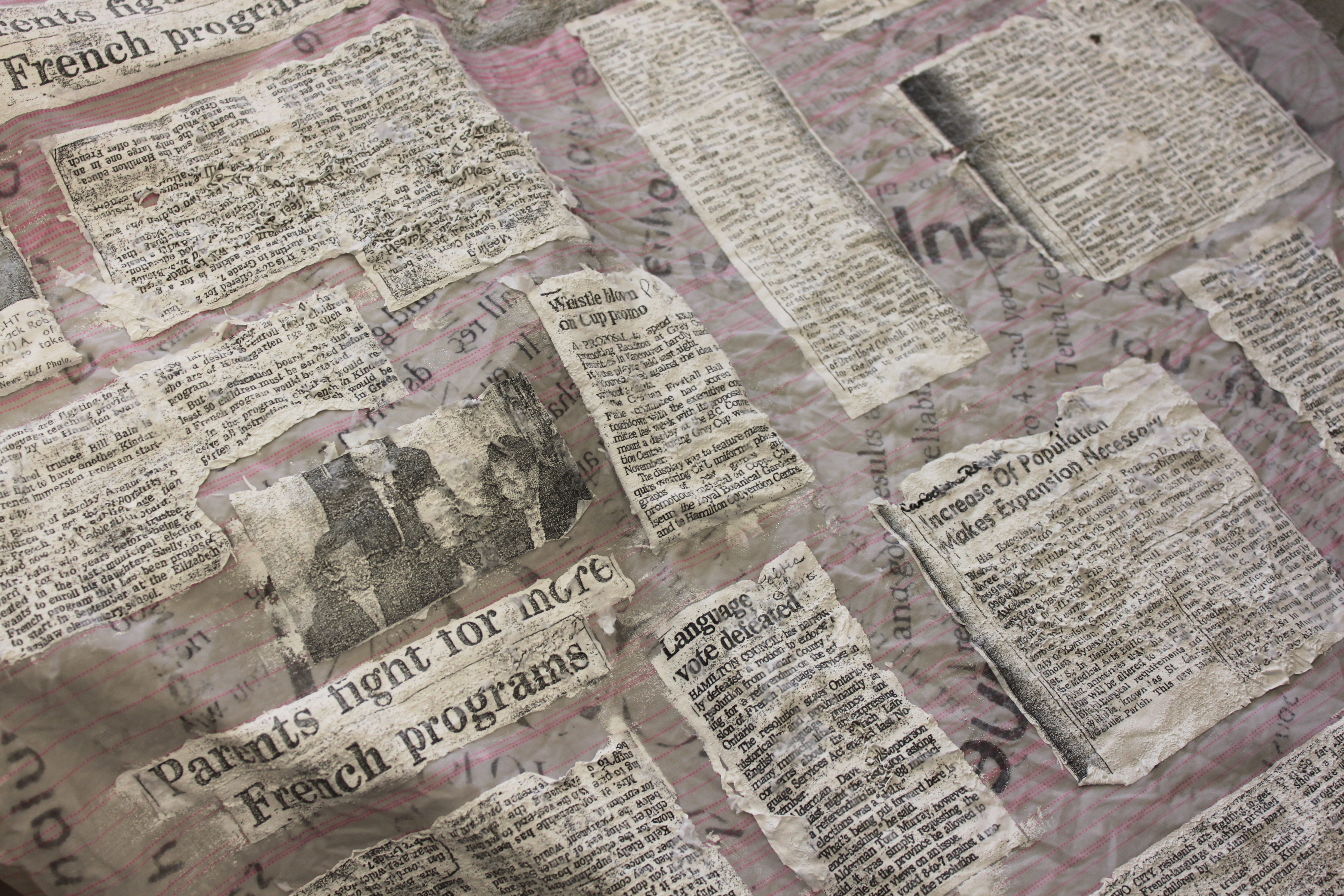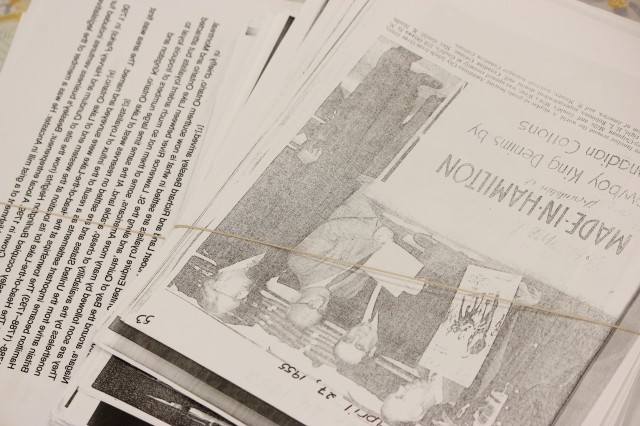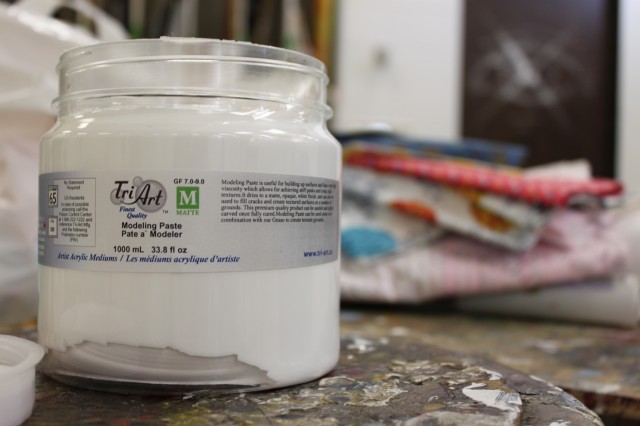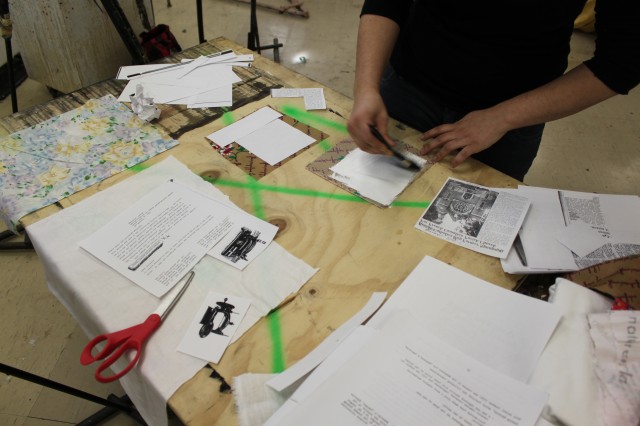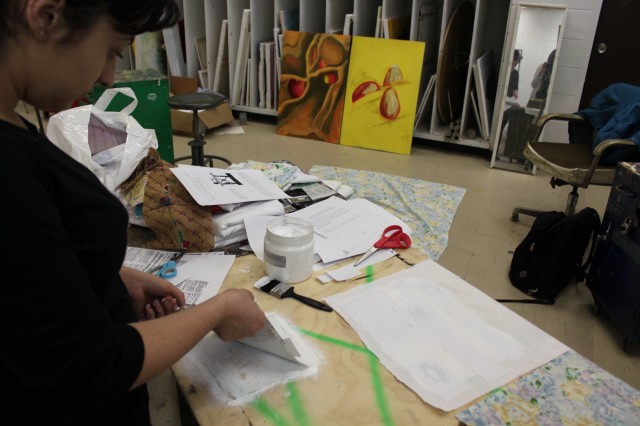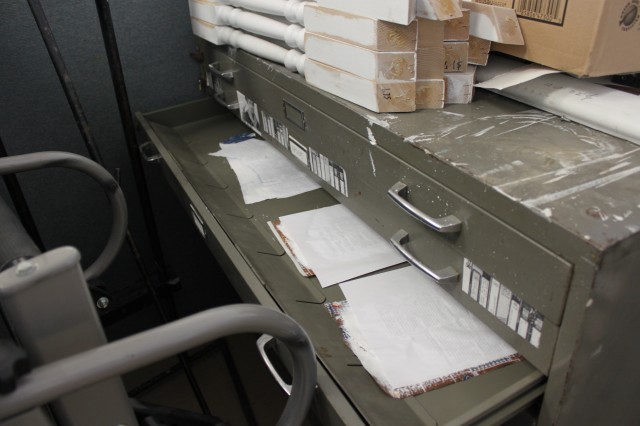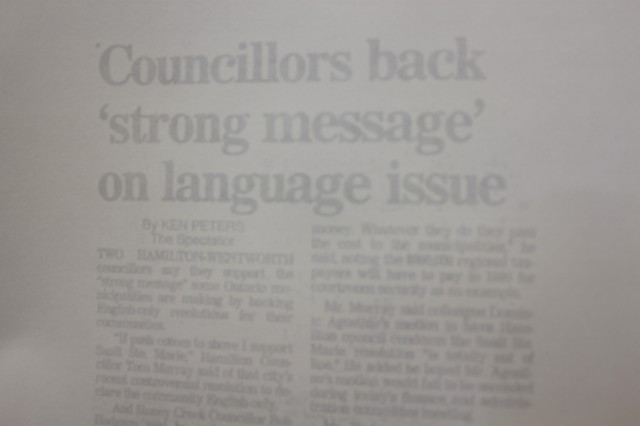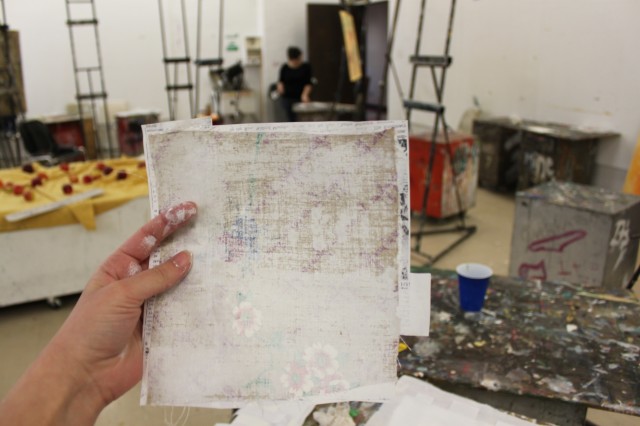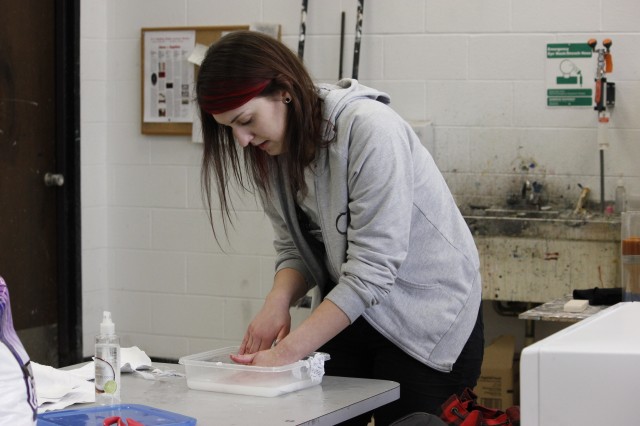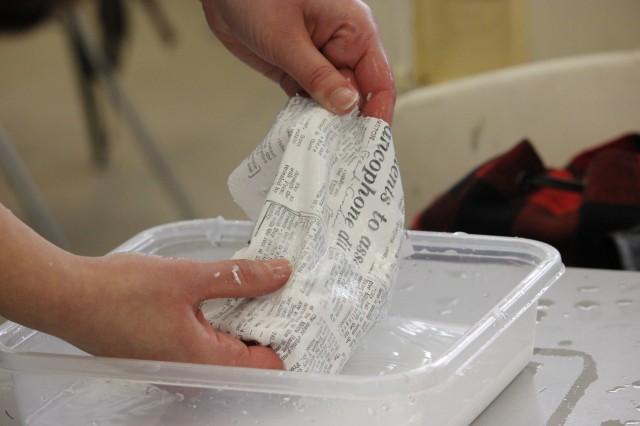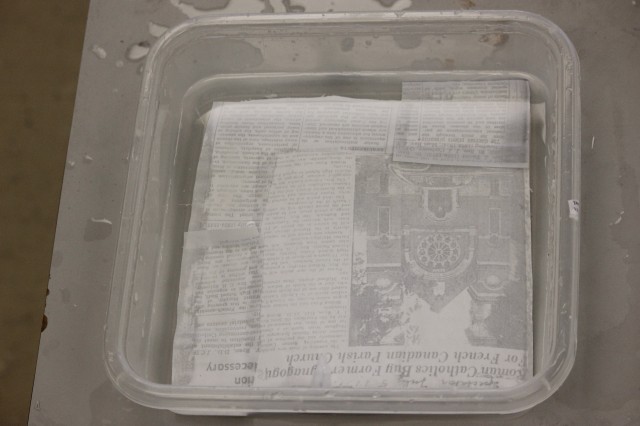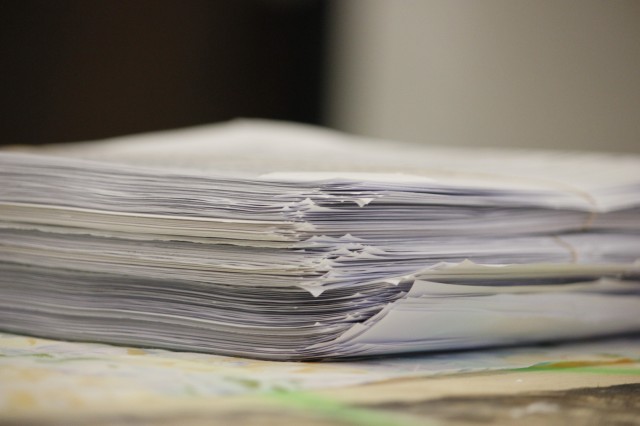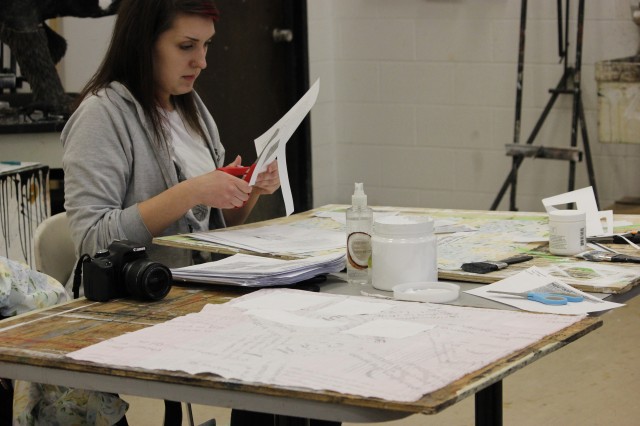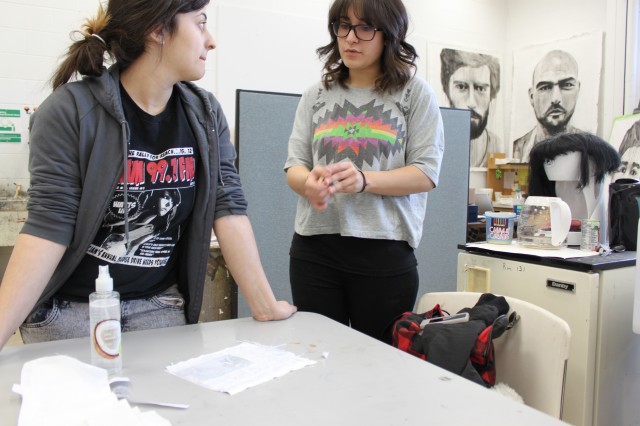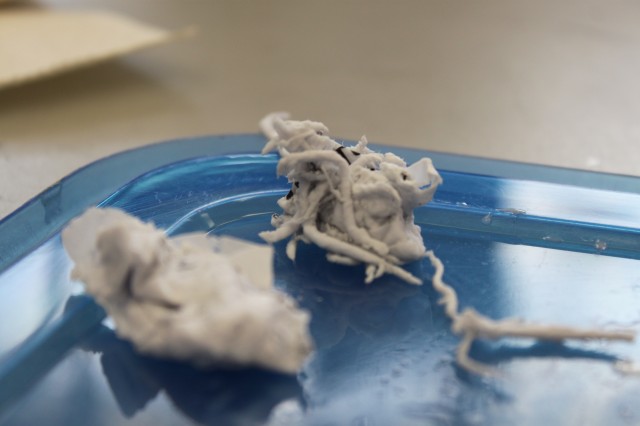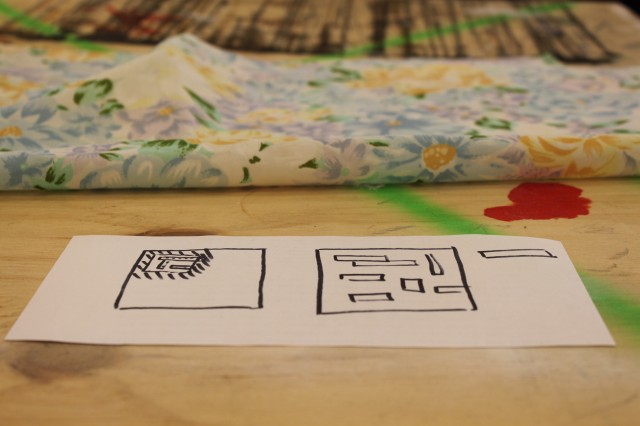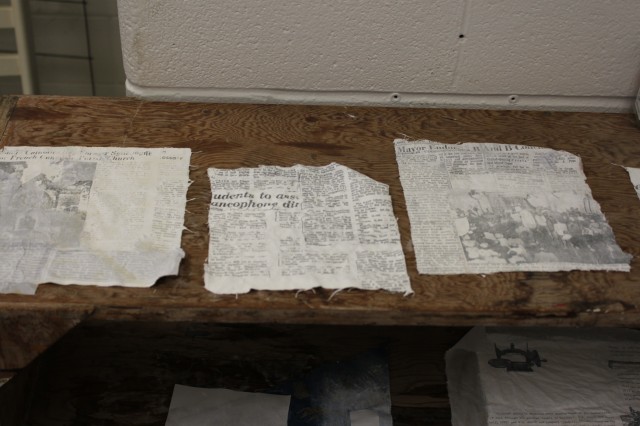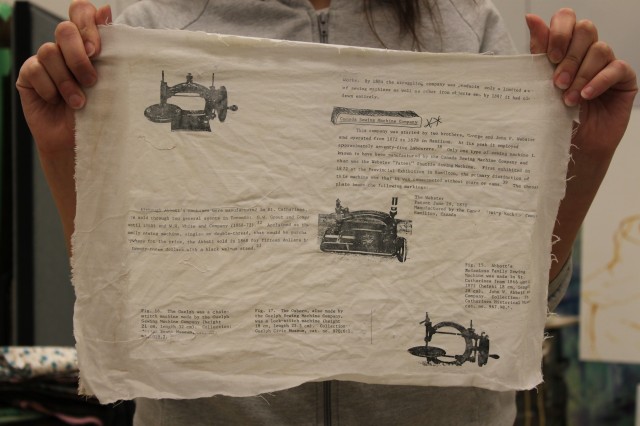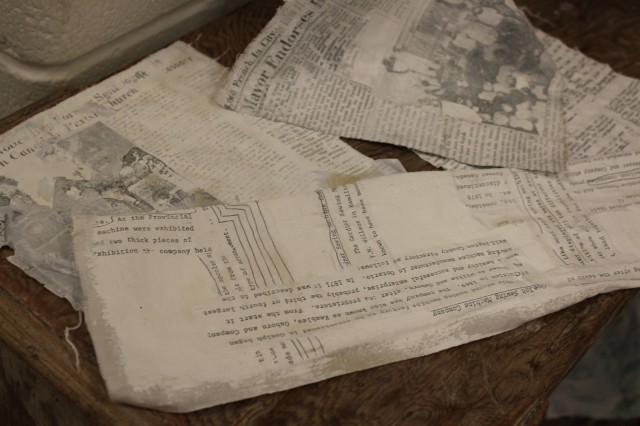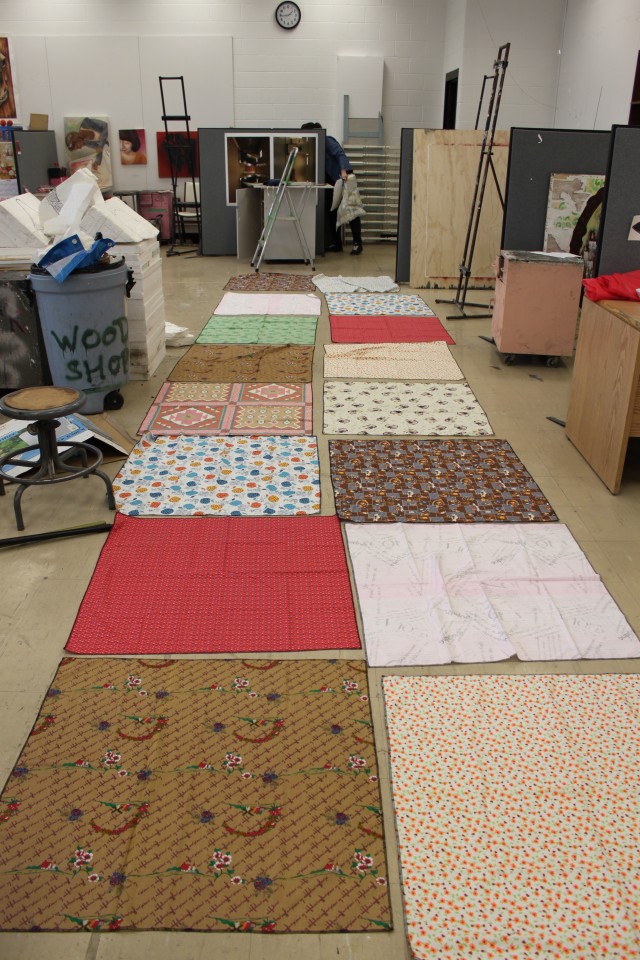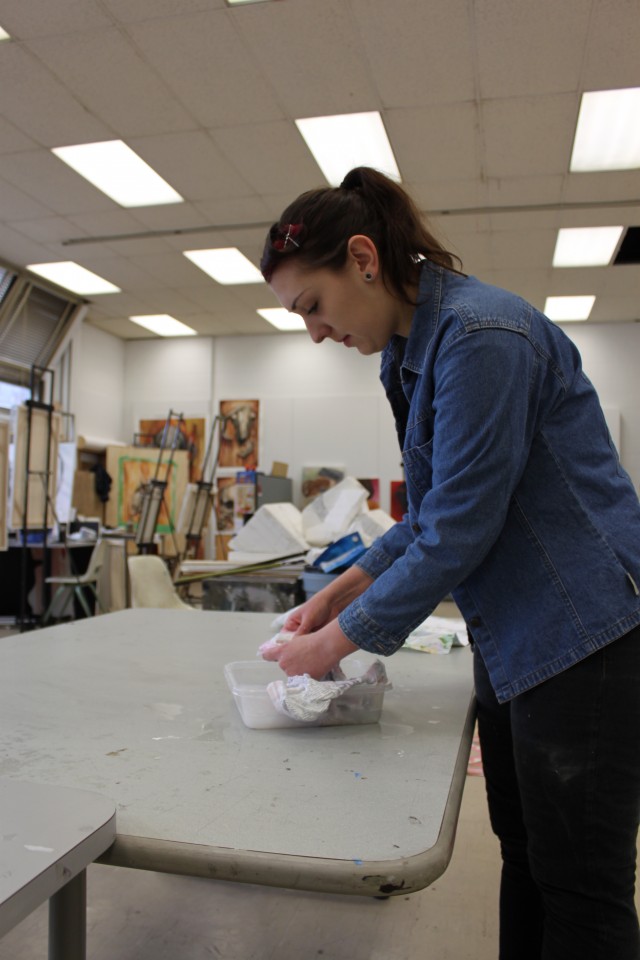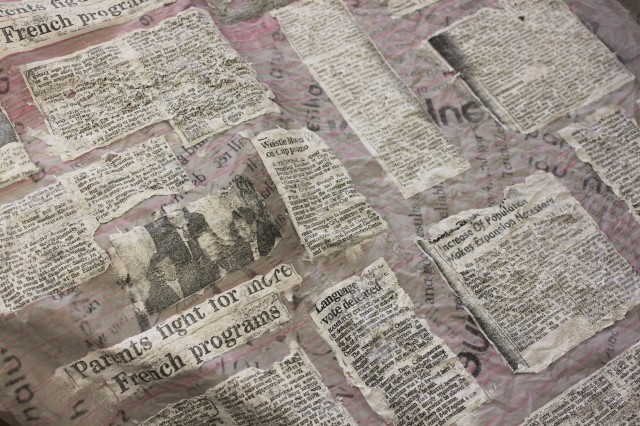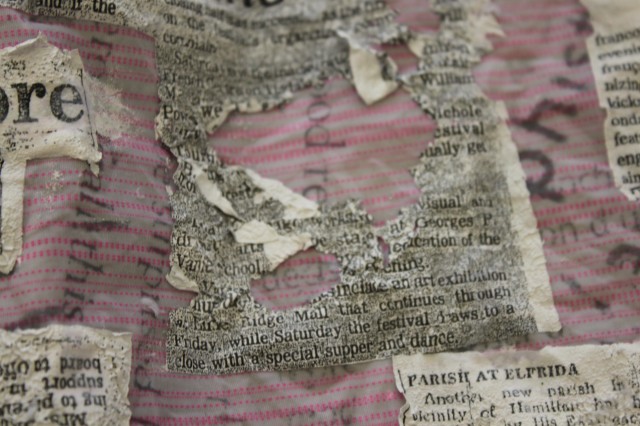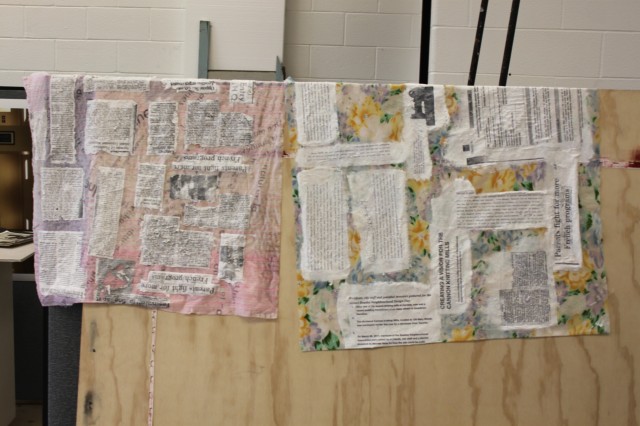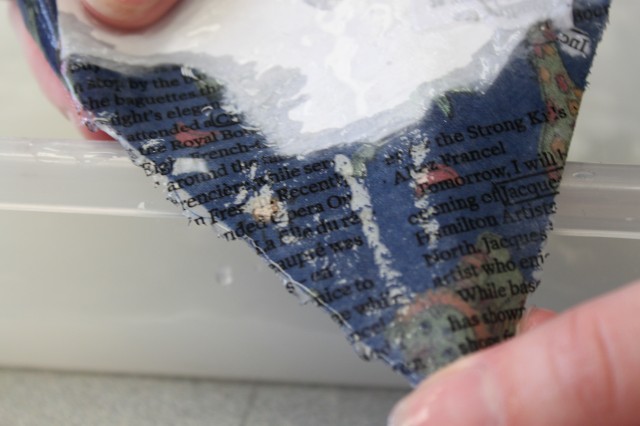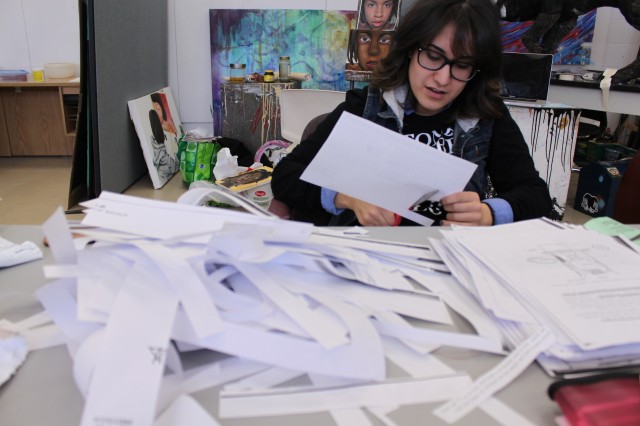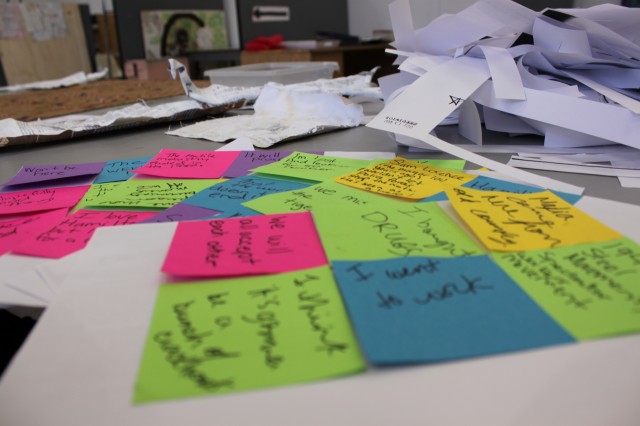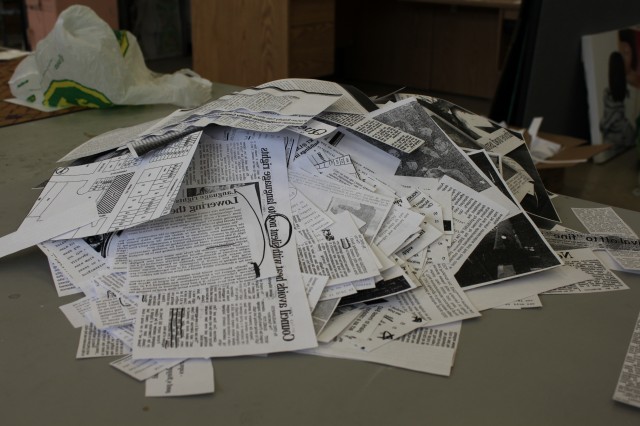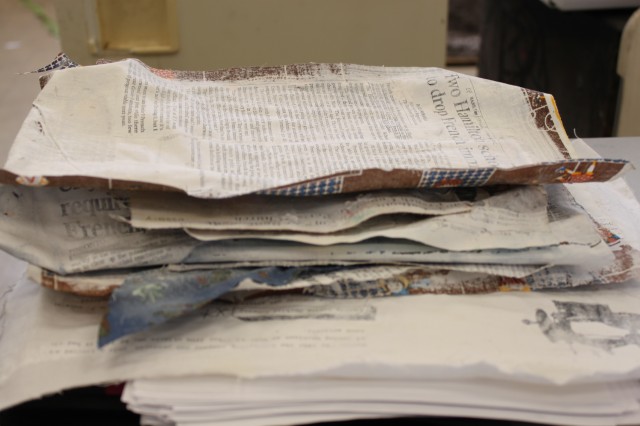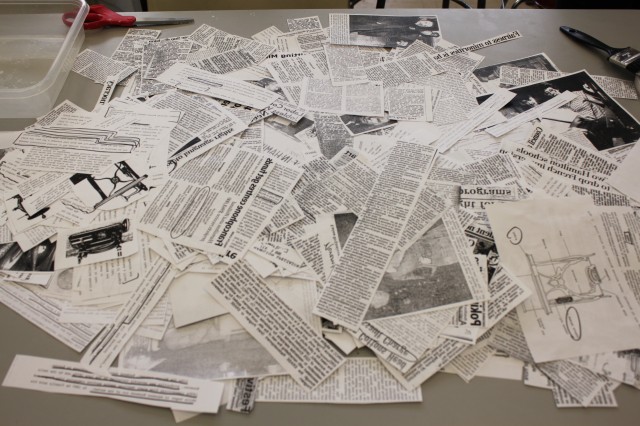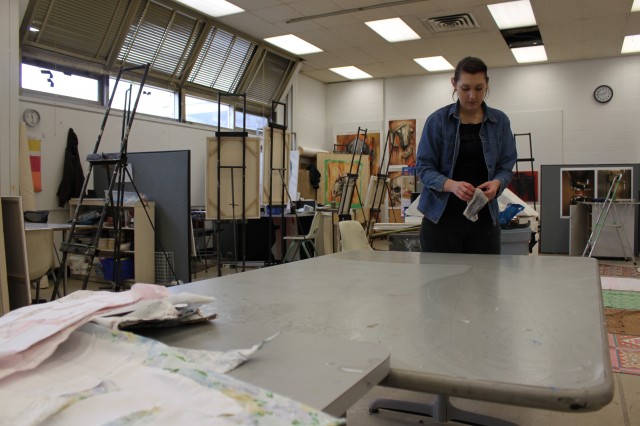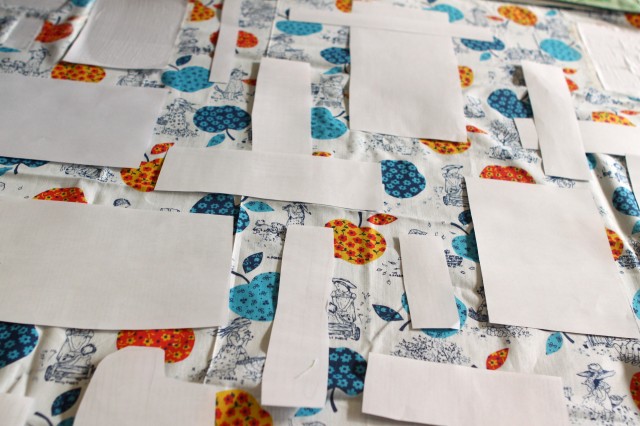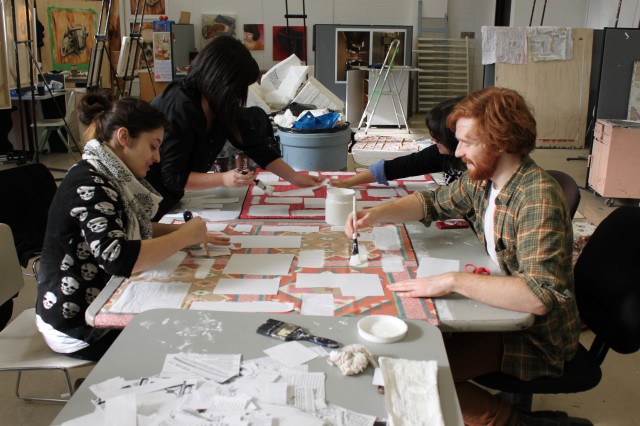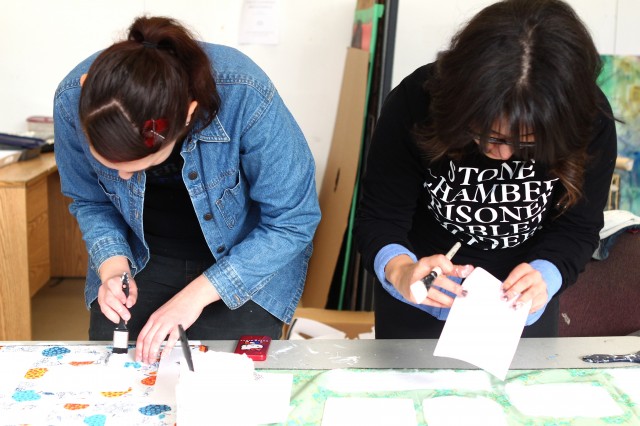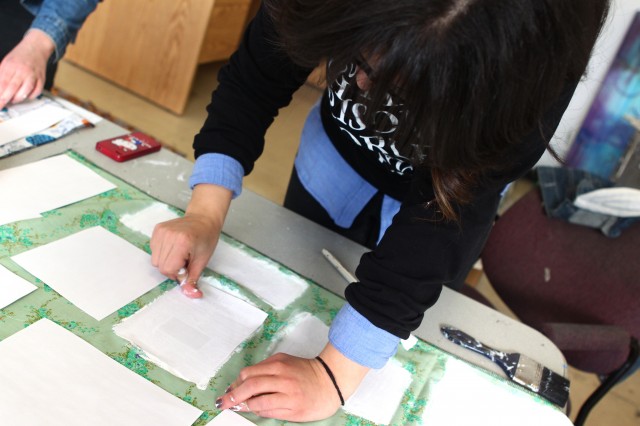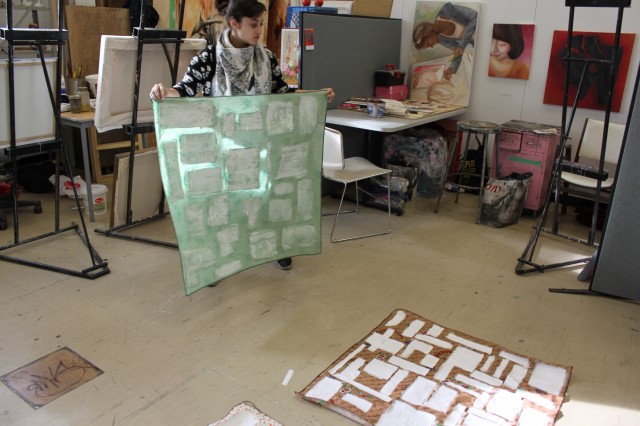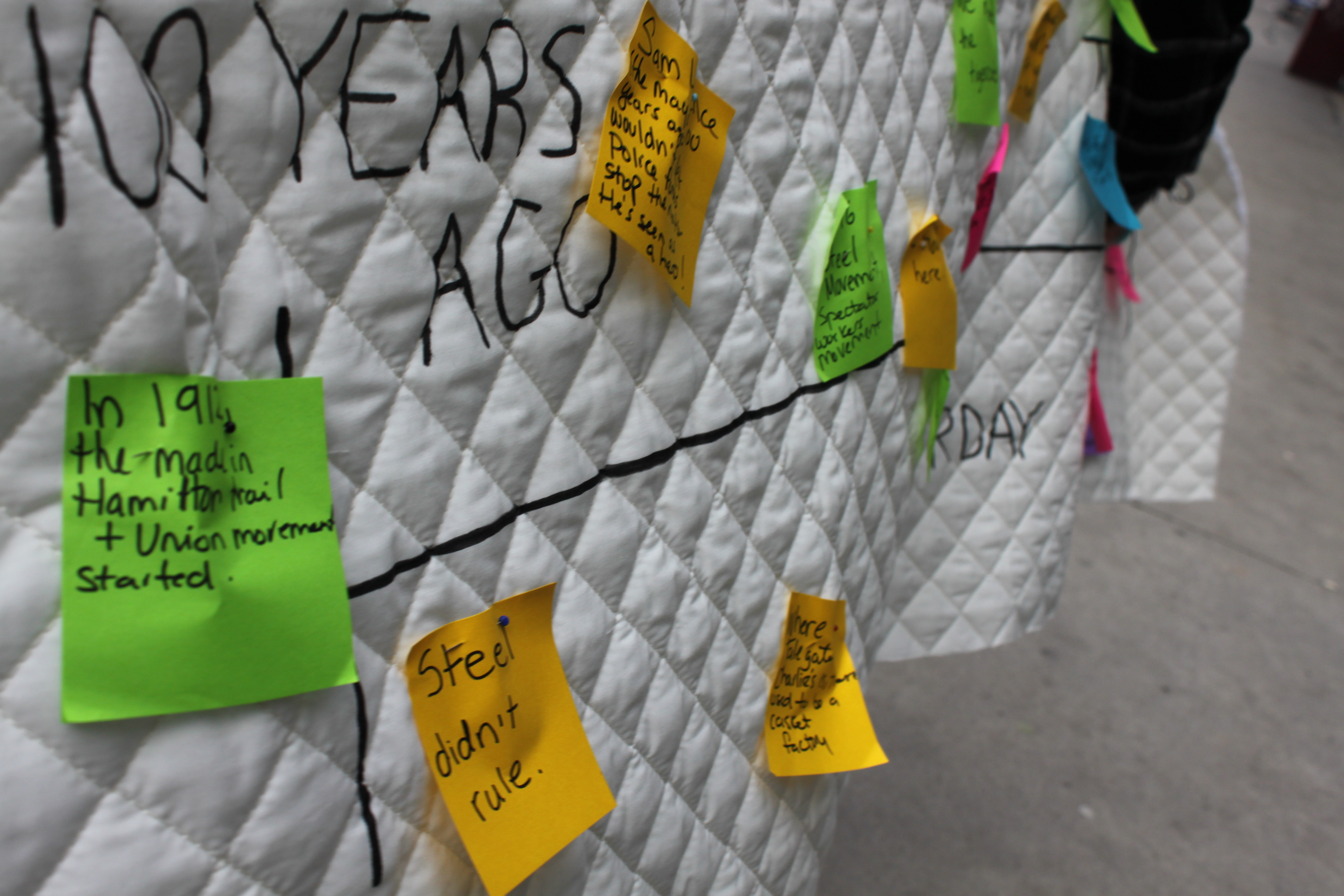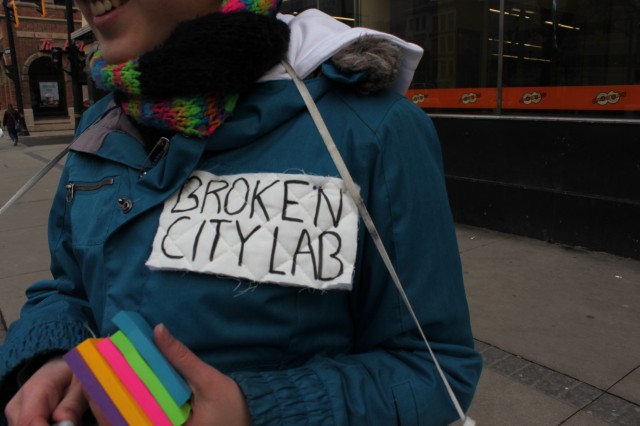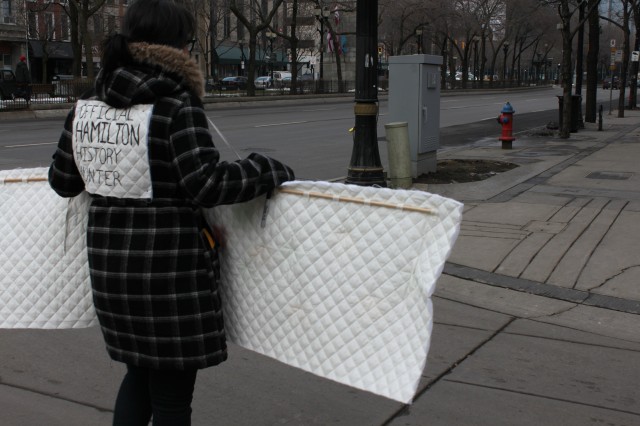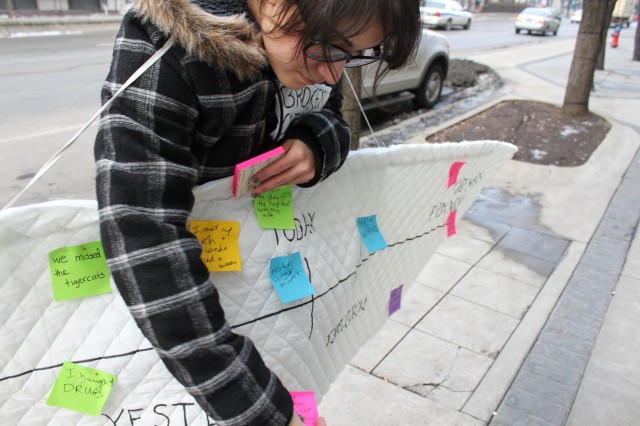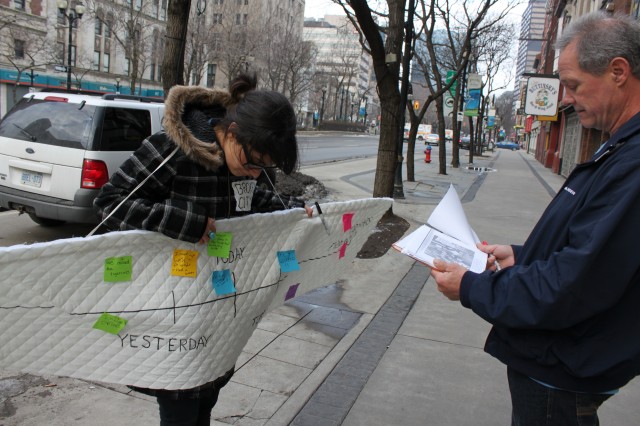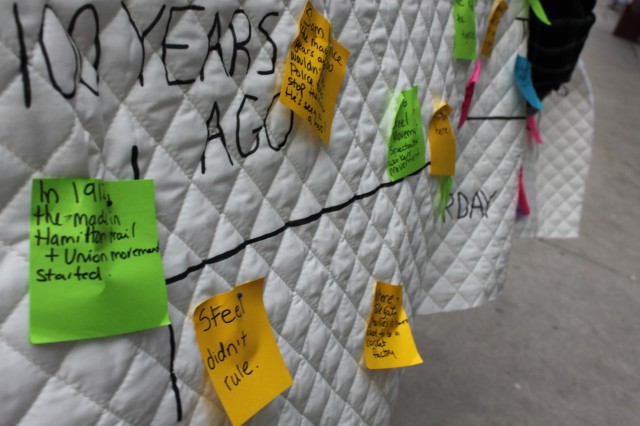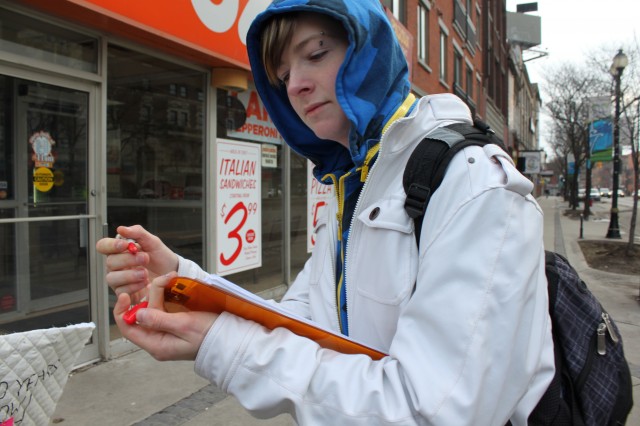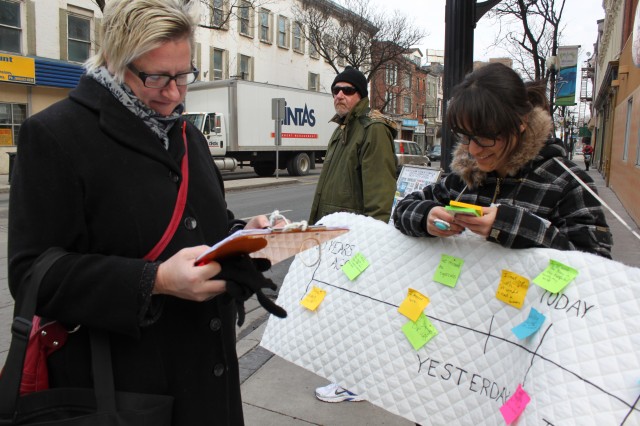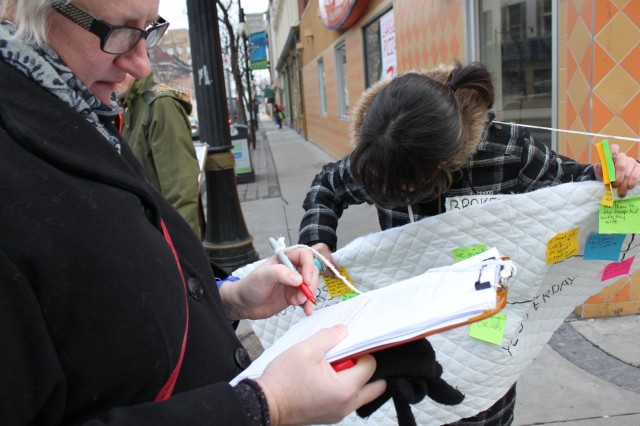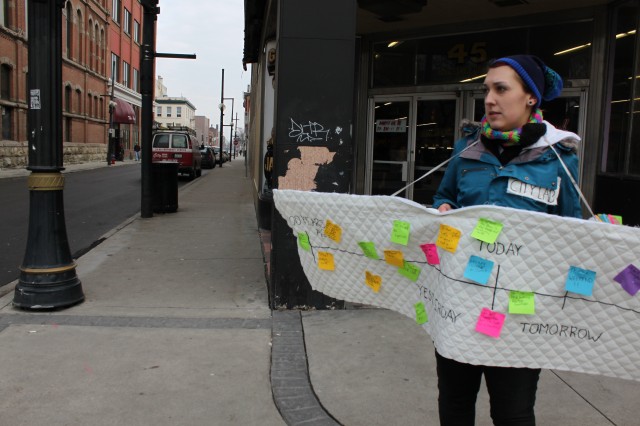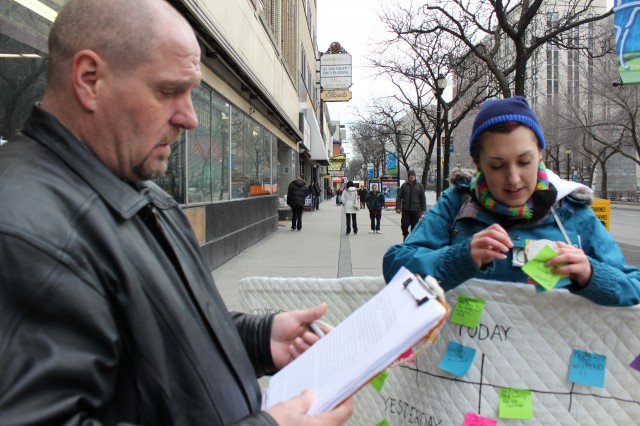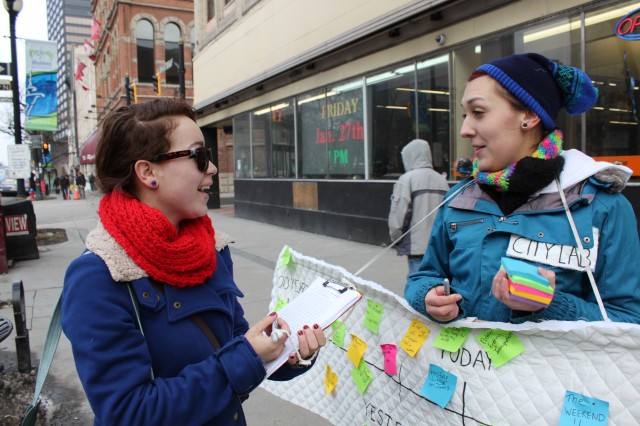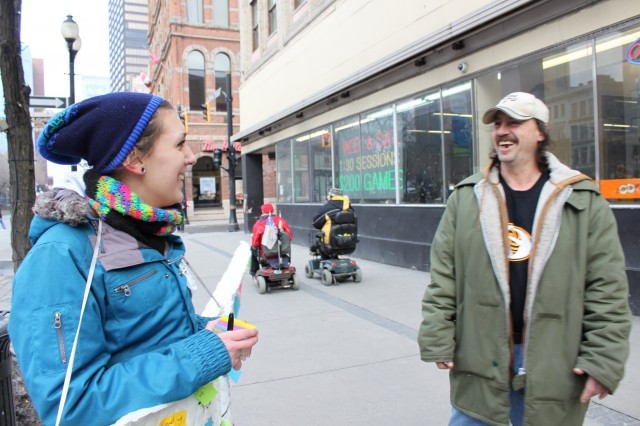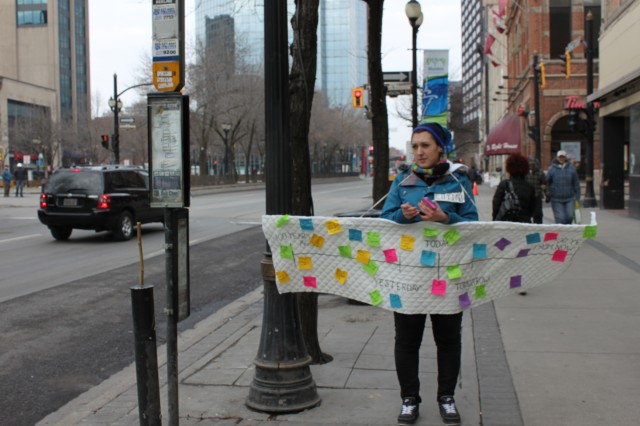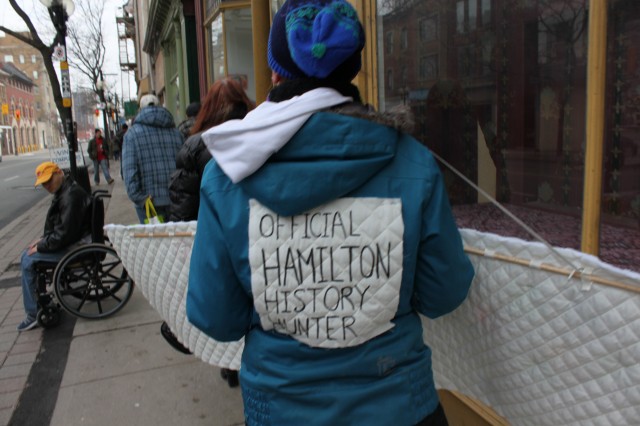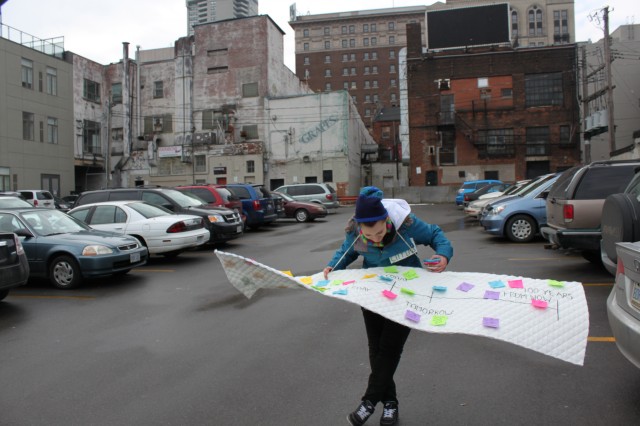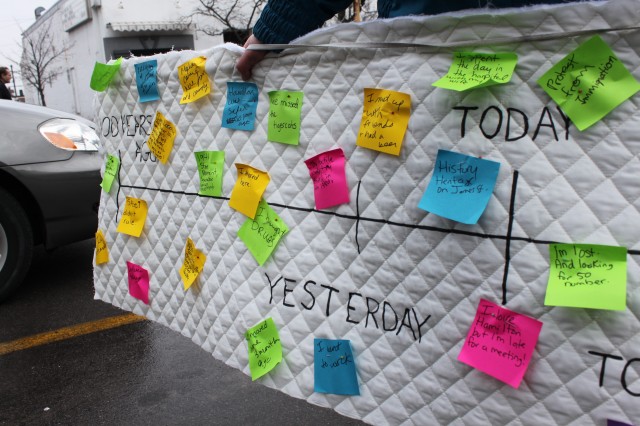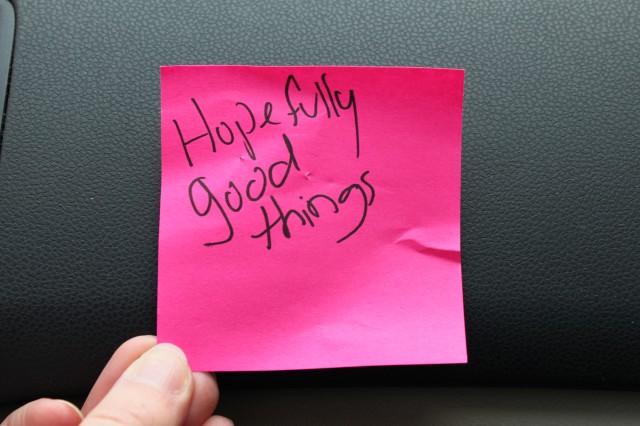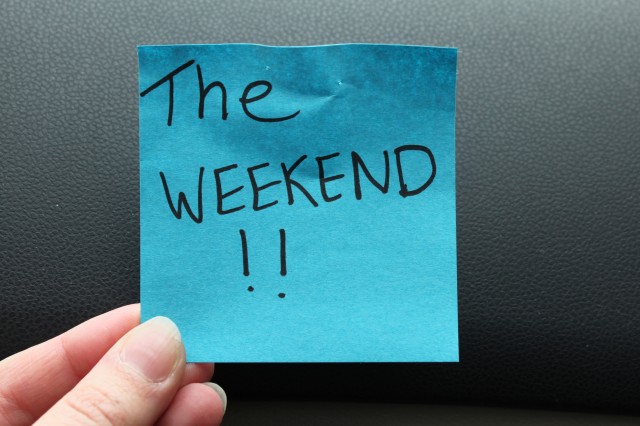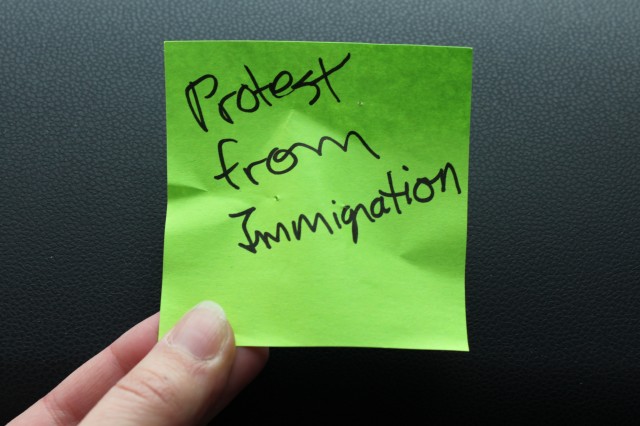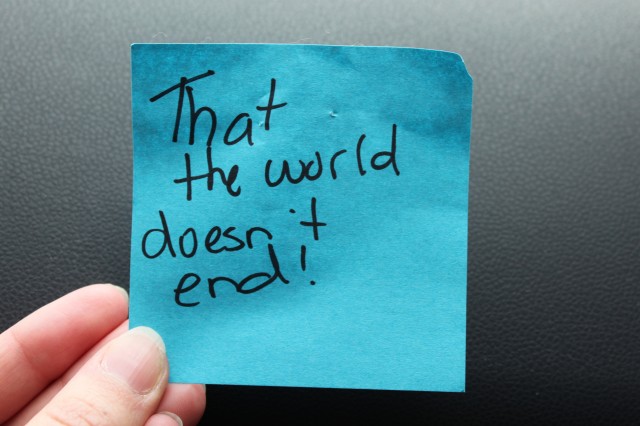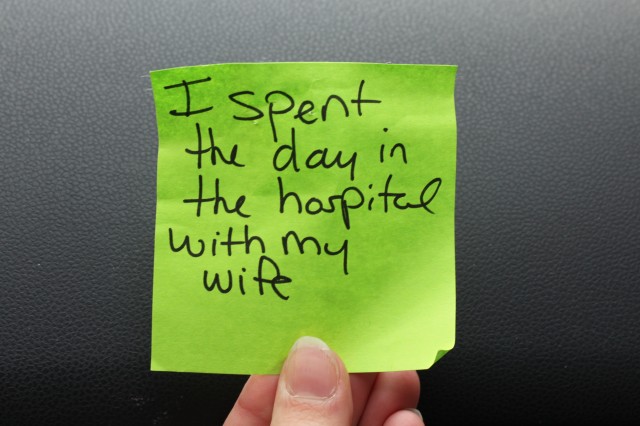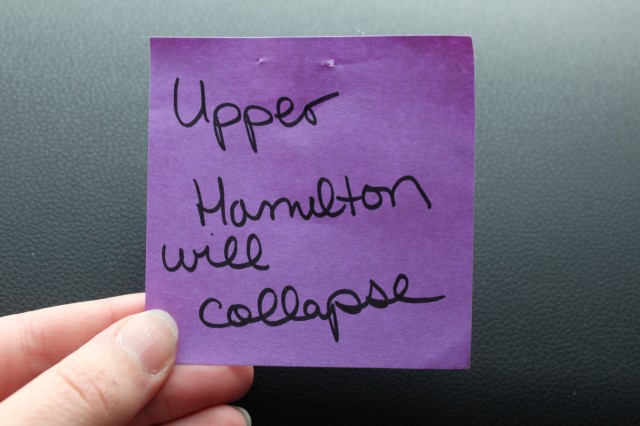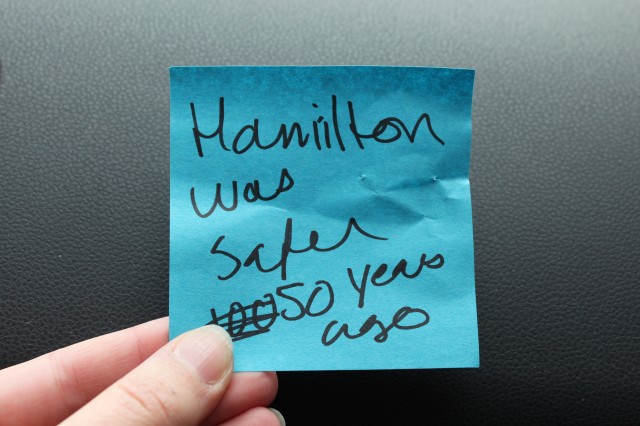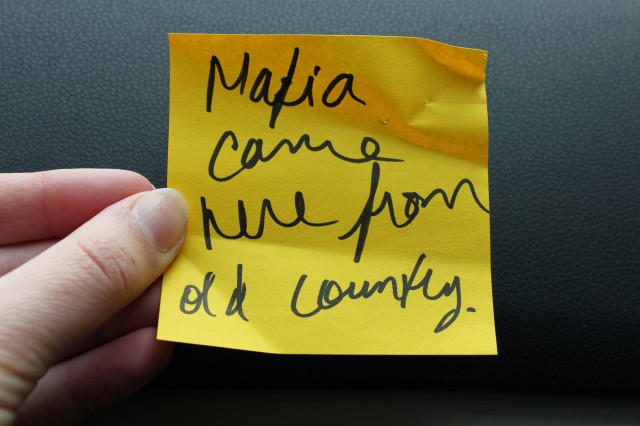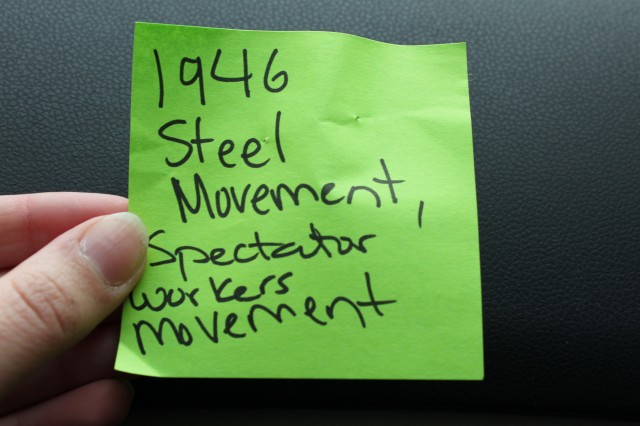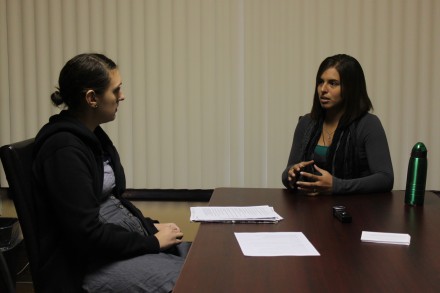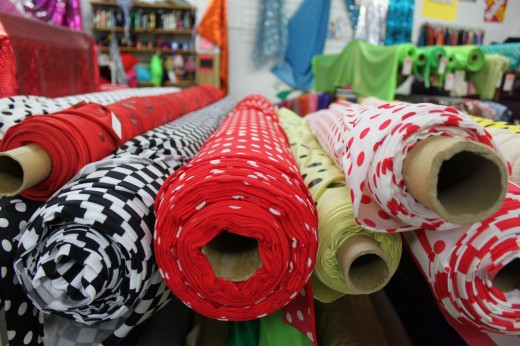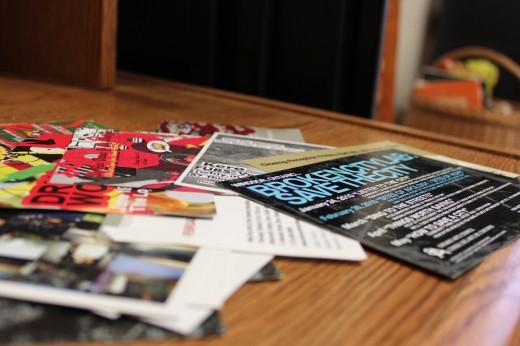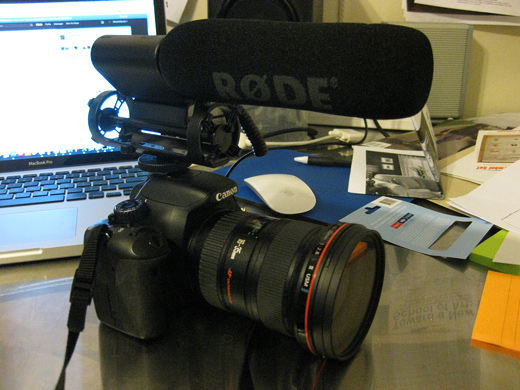As February wrapped up, we prepared our bunting and banner components to be shipped up to Hamilton for the install. Sara and I went to Canadian Tire to buy Scotch Guard to weather-seal and water-proof the work.
We bought two different kinds, both sealed the fabric adequately after setting to dry for a few hours.
Next, we stopped off at Jodi‘s studio in The House to help her finish cutting and sewing the rest of the Helvetica text letters.
The letters are black with a backing and a layer of Heat N Bond Ultra adhesive in between, for mass and stiffness.
Jodi had mentioned that she was fortunate her surger hadn’t had any problems throughout the project. Shortly thereafter, a needle bent and we had to switch to her other machine to complete the remaining letters.
Once all materials were in one place, we counted, folded, and packaged everything up to fit neatly in this tiny little box. (Amazing!) This was sent off earlier on in the week to Hamilton Artist’s Inc so that Julie could start the install before we arrived on the 9th.
Once in Hamilton on March 9th, we headed to Hamilton Artist’s Inc to check out how the install was going. The bunting looked awesome on the front of the building!
Another shot from James Street.
Pieces of this bunting will be distributed to various individuals and organizations in the final stages of the project.
The banner along Cannon Street, an unforseen frosty wind tunnel, wasn’t fully installed yet. We helped Julie measure and install for a few hours.
The install was a lot more slow-moving than expected, mainly due to the wind. We were able to get a few letters up before heading over to the Farmer’s Market to set up for the workshop.
This space, called the Community Kitchen, is for rent by the hour in the Hamilton Farmer’s Market.
A white board wall? Pretty awesome. Wish we had one of these on hand at all times!
The workshop began with a discussion about headline stories that the rest of the country hears about Hamilton, then we started talking about the local stories, both published and passed on orally, specific to the city and city residents.
We ran the workshop in both French and English, as we had both French and English speaking people in attendance. Julie was on-hand to help translate. I wrote attendee’s comments and answers on board-meeting-sized sheets of paper lined up on the wall.
We then moved the conversation toward places in Hamilton, favourite places, places you avoid, places you go to speak/hear french.
Julie helped out with writing when a lot of good things were being said and I couldn’t keep up!
Everyone had a lot of good insights, as most were originally from Hamilton, or just generally curious and good observers of their city surroundings.
Stories of development for buildings previously sitting vacant in the downtown core, tales of infrastructures designed to keep people moving, failed and forgotten industries, rumours of neighbourhoods with bad reputations and stories of missed and seized opportunities were all shared.
This woman, a francophone, had a lot of insights into local francophone culture. She also told some amazing personal stories about her experiences as a francophone in Hamilton.
Some favourite places in Hamilton: James St N, Bibliothèque central, Musée sea beaux-arts de Hamilton, The Starlite, among others.
We then passed along a big sheet of paper and re-wrote an exquisite corpse-style history of Hamilton, in Franglais. Starting with the past, the story moved through to the present and then the future with each participant’s additions.
As the story was being passed around, we began work on our collaged maps. Using scraps of fabric, card stock, glue and sharpies, participants made artistic maps of a site, place or space in Hamilton discussed previously.
I used these strips of arrows to show one-way roads in the downtown core, namely Main St, and King St.
There were lots of fun materials and patterns to pick from.
Here a participant is adding to the Hamilton narrative while another is making their map.
Finished brainstorm sheets; What stories is Hamilton telling the country?
What are the local stories that nobody else gets to hear?
Where was the first place you visited in Hamilton?
What is your favourite place in Hamilton?
What places/things/people do you avoid in Hamilton and why?
Where can you hear people speaking French in Hamilton?
And finally, where is the heart of the city? The general consensus is that Jackson Square, the multi-use complex that hosts the Farmer’s Market, the public library and a mall in the downtown core, is the heart of the city. Also, the monthly Art Crawls that happen the first Friday of every month were also considered to be a driving force in the city. We decided this question needed to be asked to more people, so we took it back to Hamilton Artist’s Inc to ask Art Crawl attendees.
Back at HAI, we set up a table in the lobby for Art Crawl perusers to interact and participate.
Signs in both English and French were displayed, asking Art Crawl-goers to draw us a map of the heart of the city.
With super-sized post-its and some bright coloured sharpies, we thought this activity would be fun and quick for people of all ages and abilities attending the Art Crawl.
I drew an example, a rough interpretation of Jackson Square.
Everyone was having so much fun drawing maps during the Art Crawl!
We had to leave before the night was over, but we are looking forward to having a look at these maps, and possibly including them in the forthcoming Two Tales of a City publication.
The first iteration of text of the banner on Cannon Street; NEW TALE NO EXCUSE
Watch out for more messages over the next two months! Want to participate? Fill out our Hamilton form, aussi en Français.
